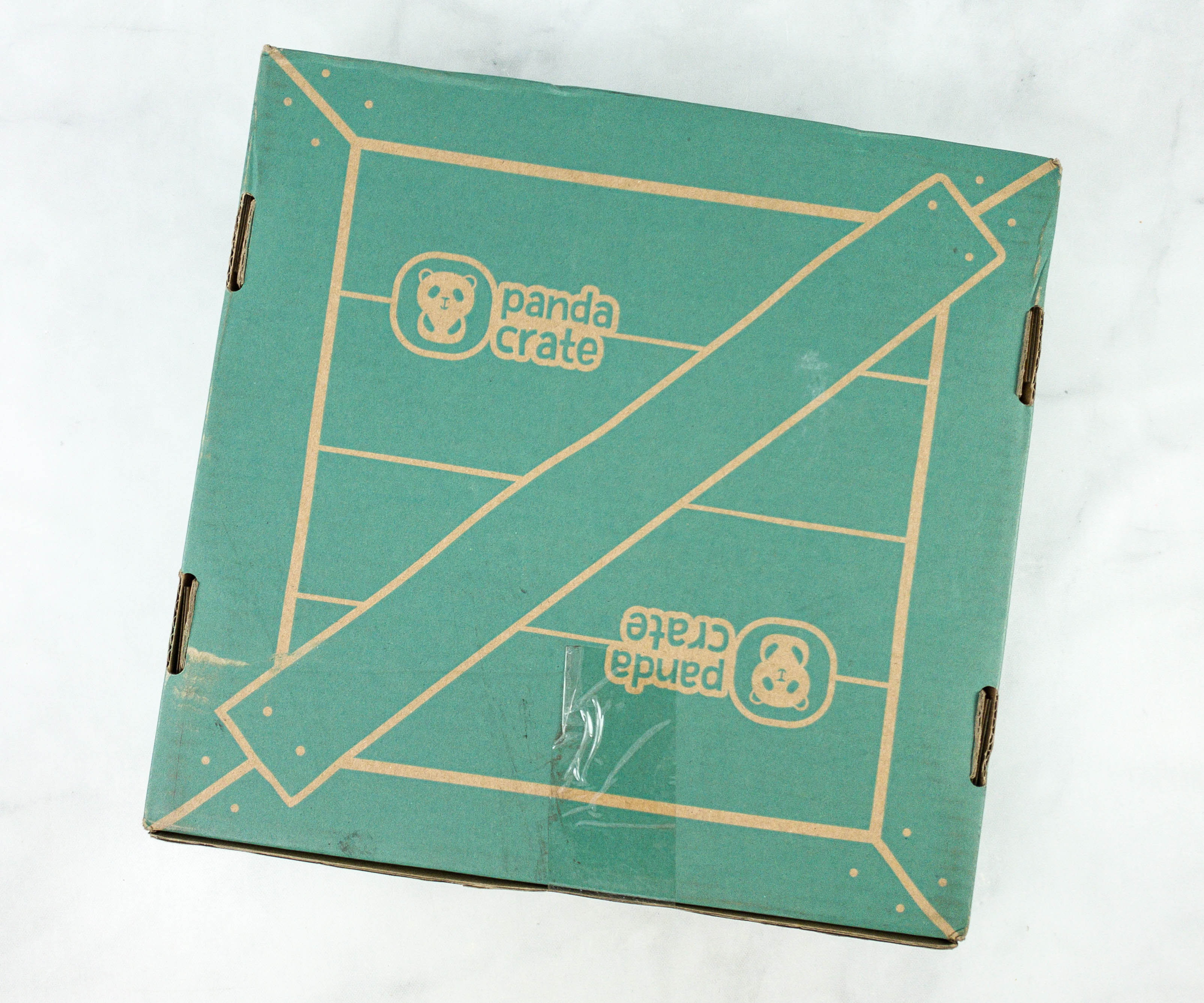
Panda Crate is a subscription from the KiwiCo family that’s specifically curated for babies ages 0-2. Shipping every other month, it costs $39.90 with free shipping to the US. This subscription is made for infants and toddlers to help in their early childhood development. Each box includes 5-6 learning toys and/or books ideal for child’s age and stage, a copy of wonder magazine, Activity Cards to promote learning and development, and Beyond the Crate Cards to help you bond and explore with your child. All products from this box are designed by experts and backed by researchers at Seattle Children’s Hospital.
DEAL: For a limited time save 30% on your first box! No coupon code needed, just use this link to get the offer! This is the best coupon available for Panda Crate!
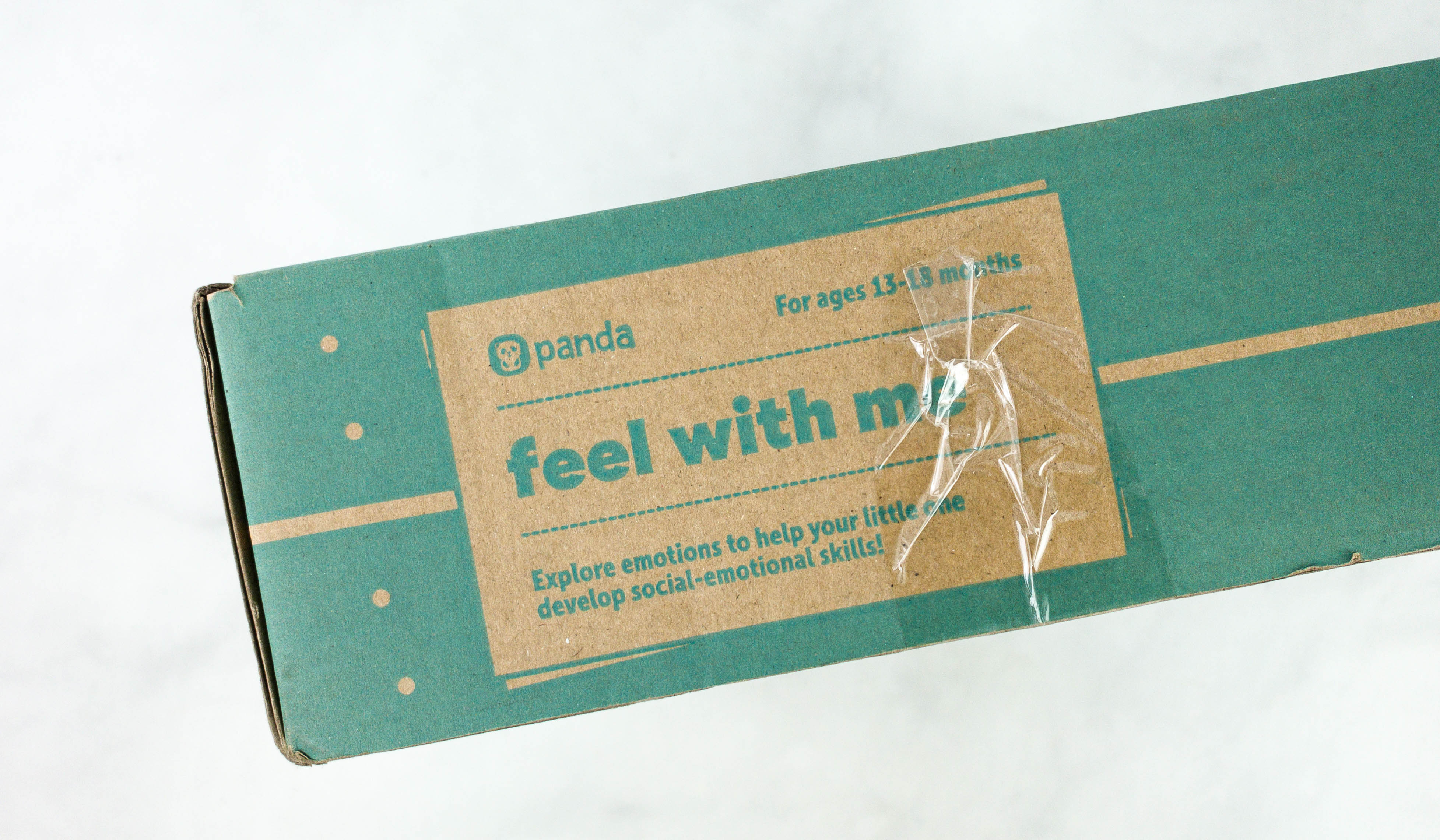
It’s the FEEL WITH ME box!
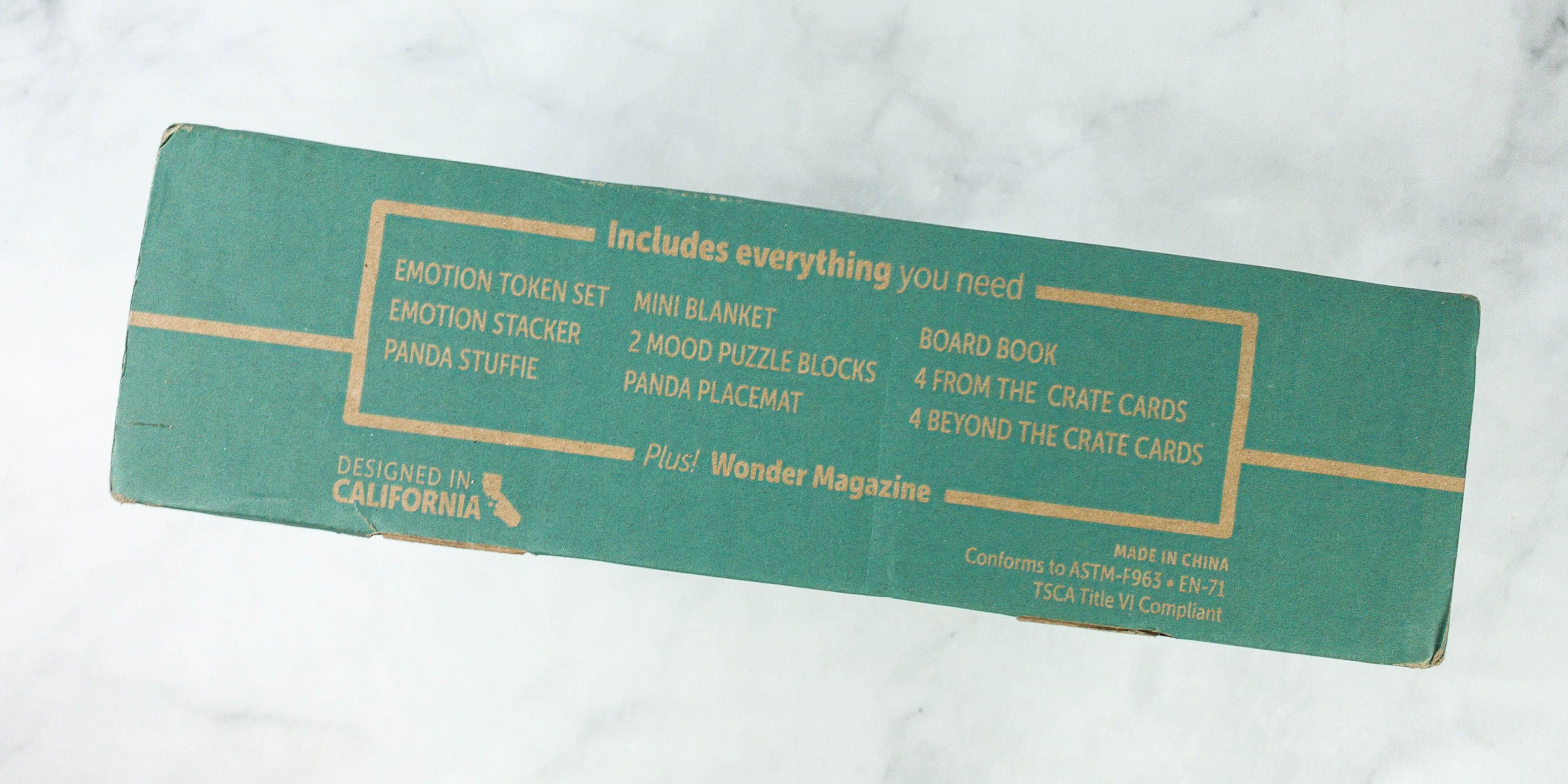
This side of the box features a list of all the items inside.

Everything is placed inside this cute green box!
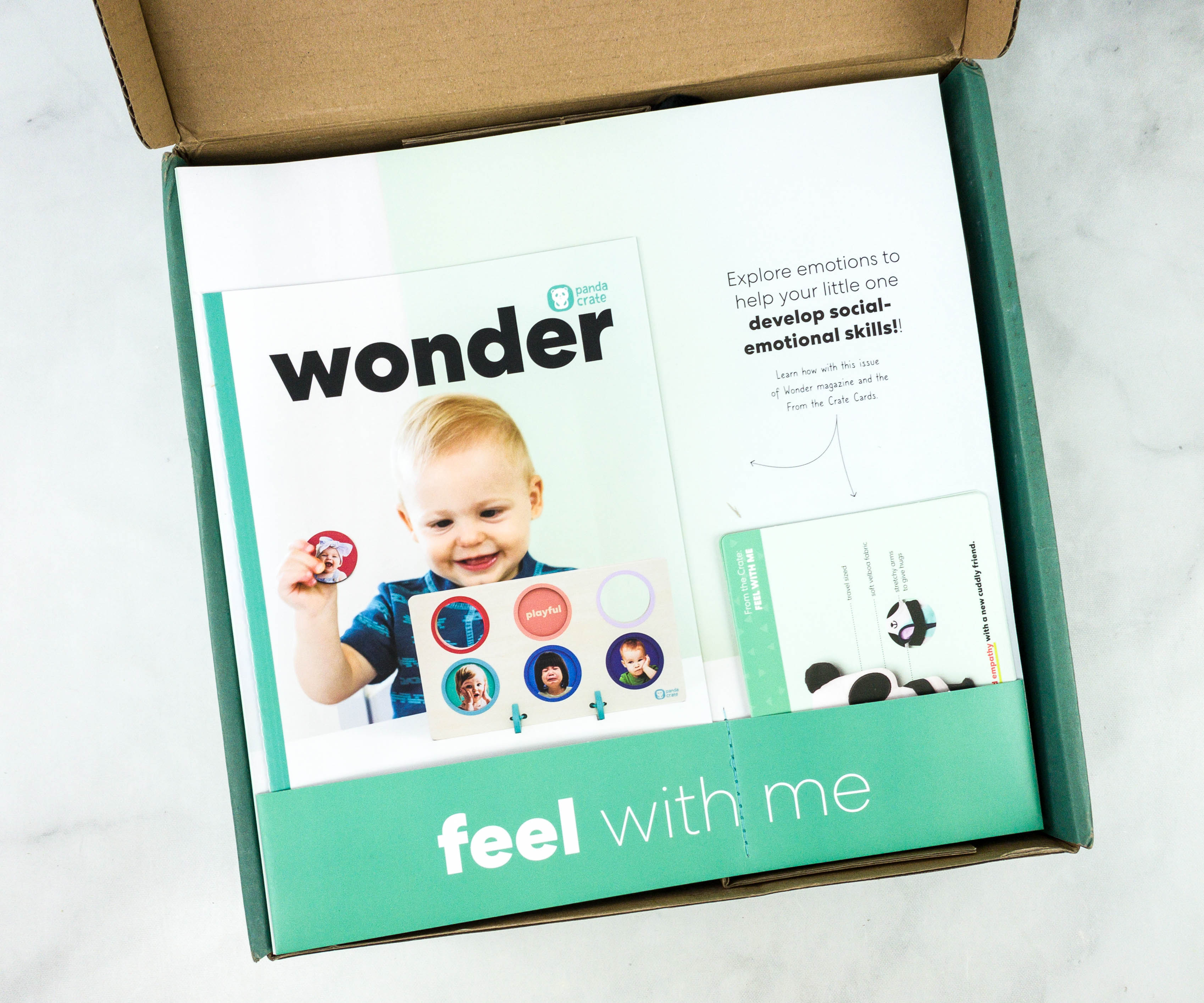
It comes with a Wonder Magazine and a card.
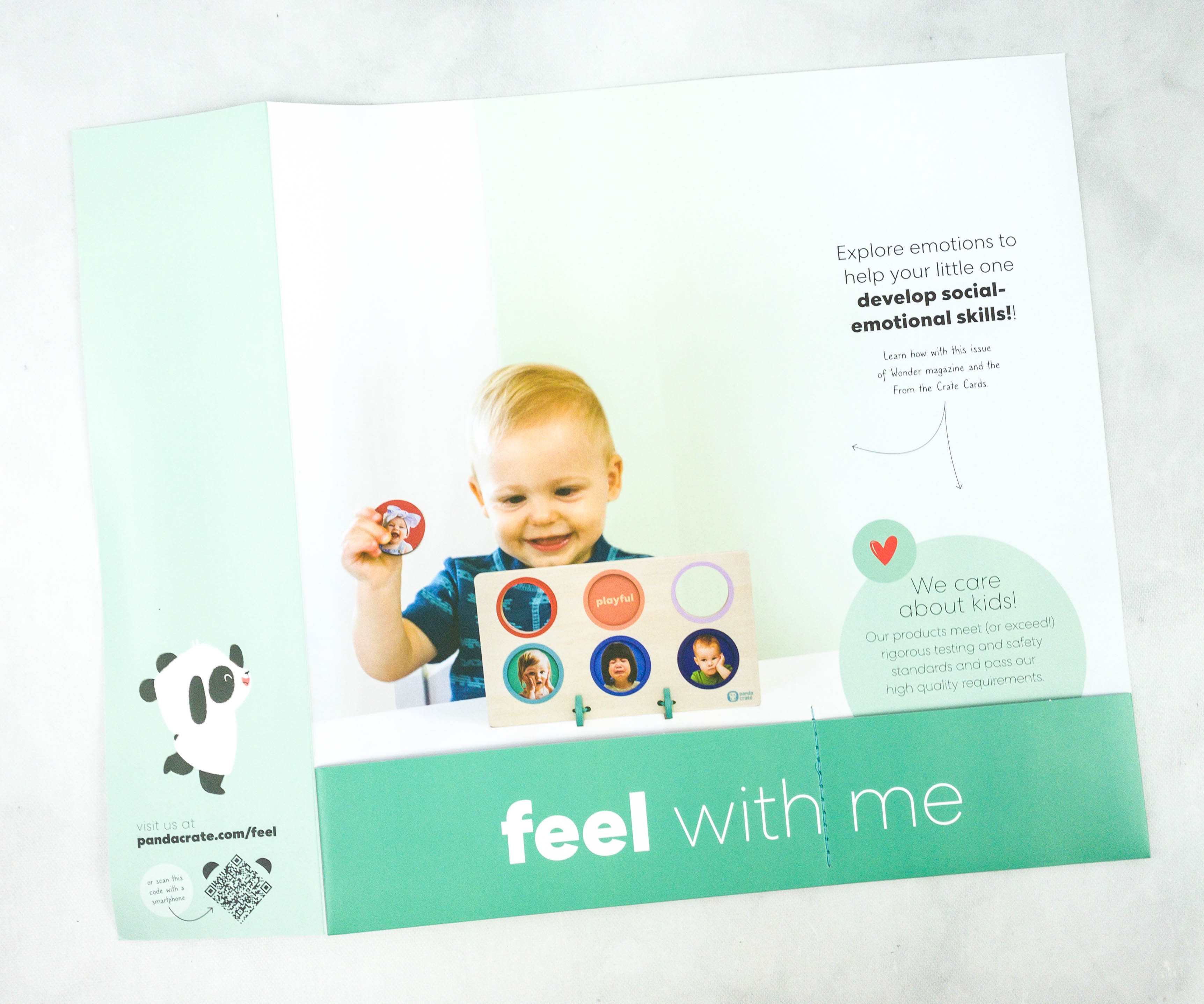
According to the card, the items included in this month’s box will help us explore the emotions that will help our toddler develop their social and emotional skills!
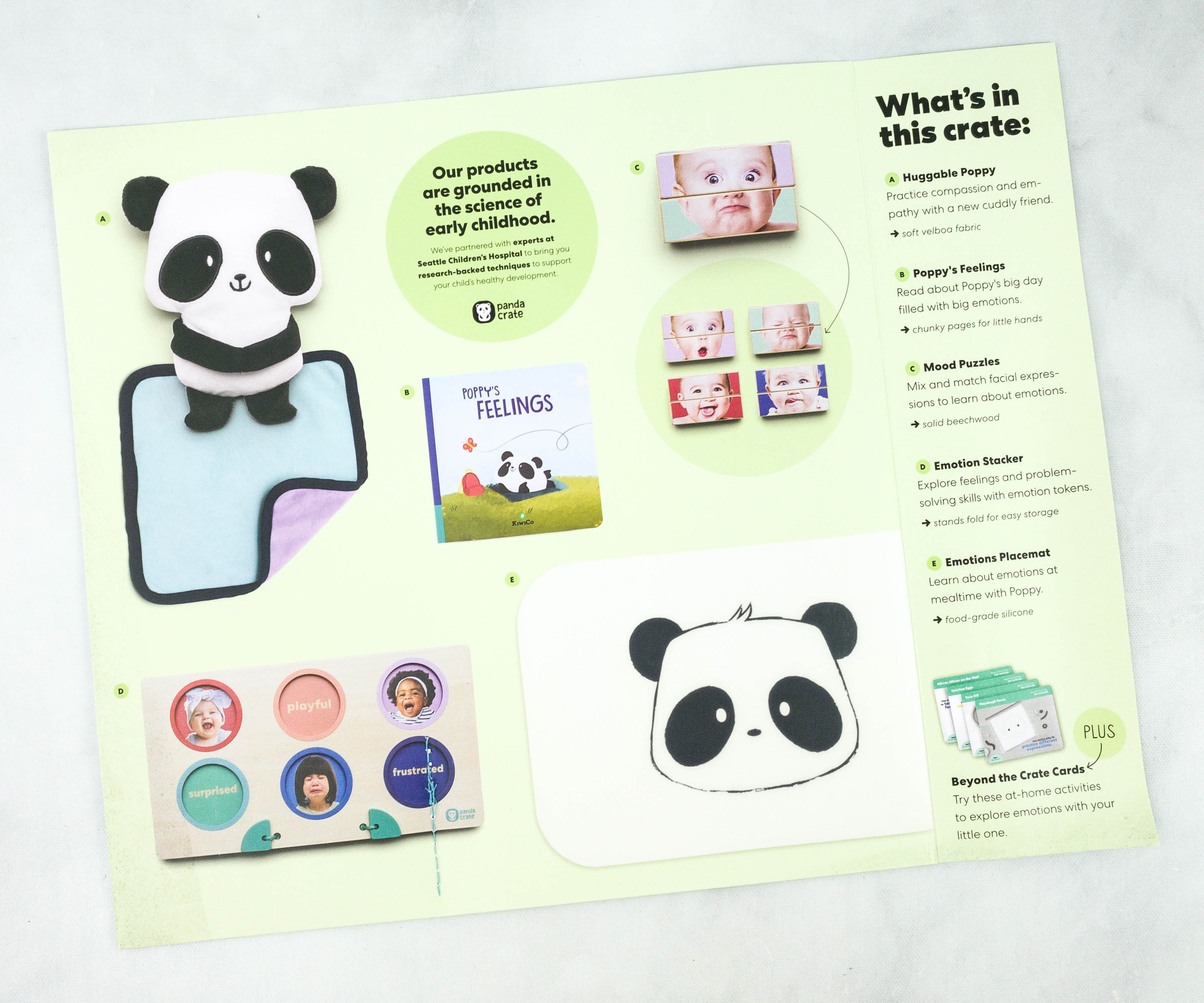
Everything in the box is listed down on this page, and they even provided a picture and a bit of information about each of them!
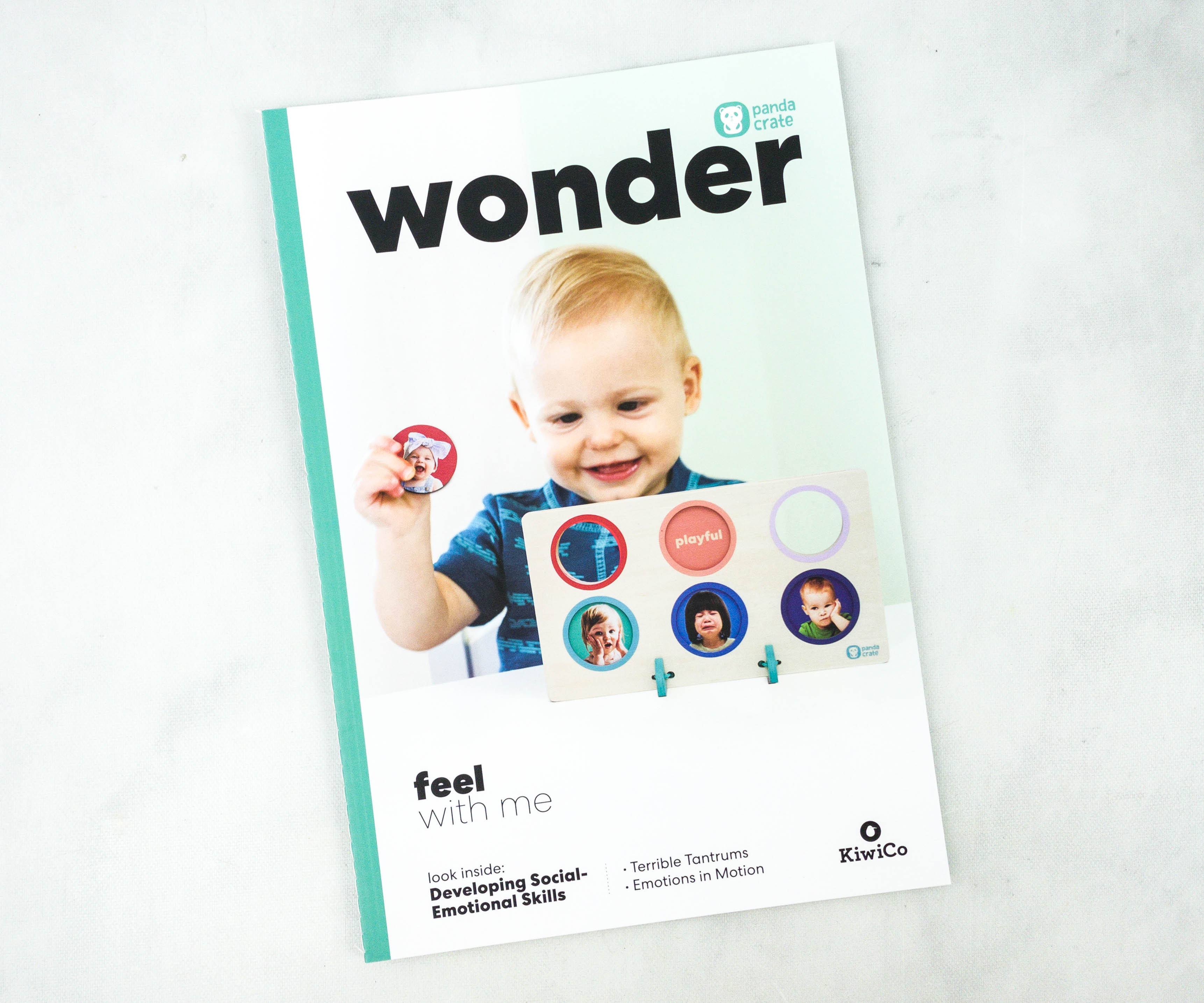
This month’s Wonder Magazine includes special articles about Developing Social-Emotional Skills.
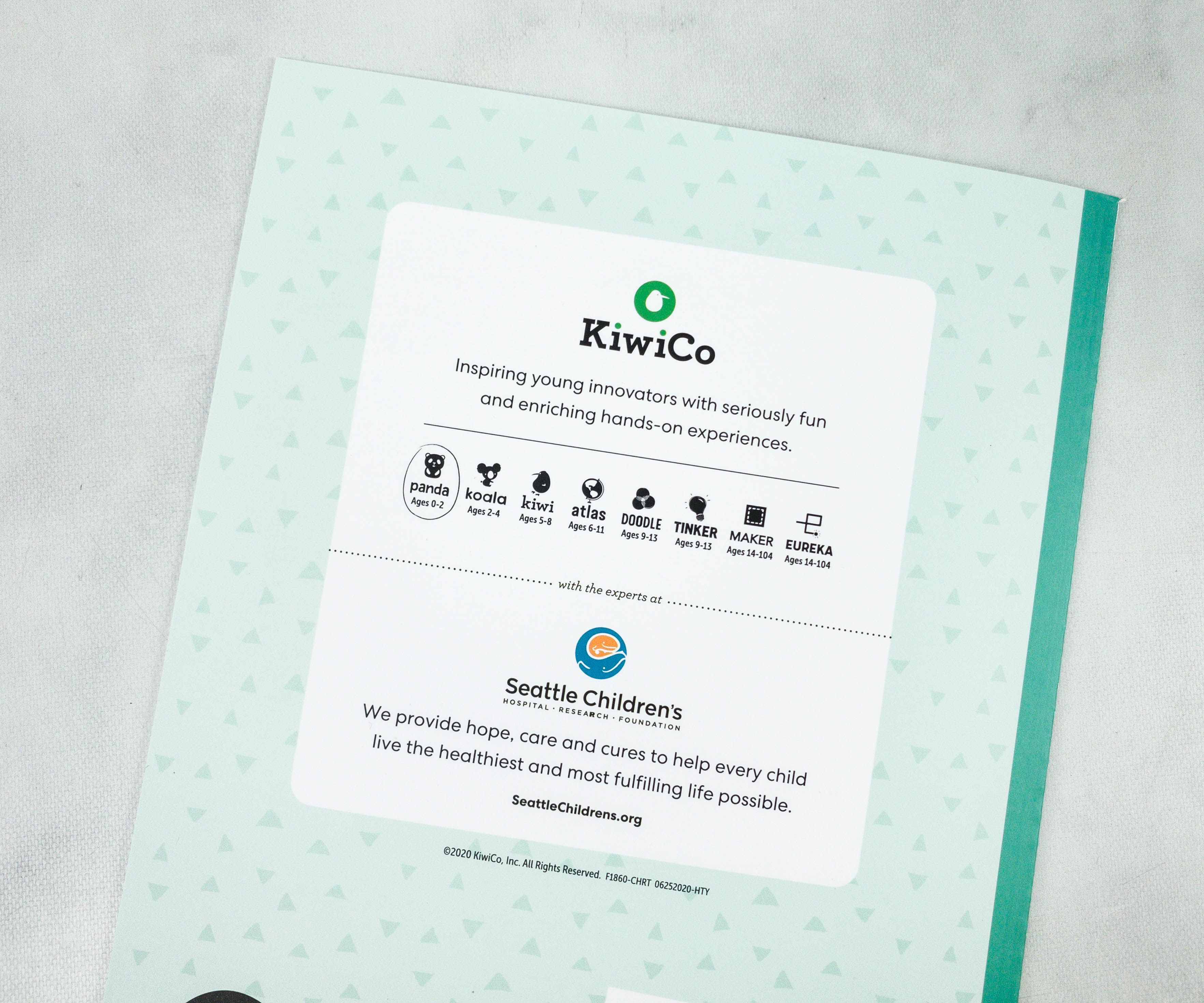
The back of the magazine presents KiwiCo’s goals for the next generation of innovators!

The booklet features a table of contents so you can easily get a complete overview of all the topics.
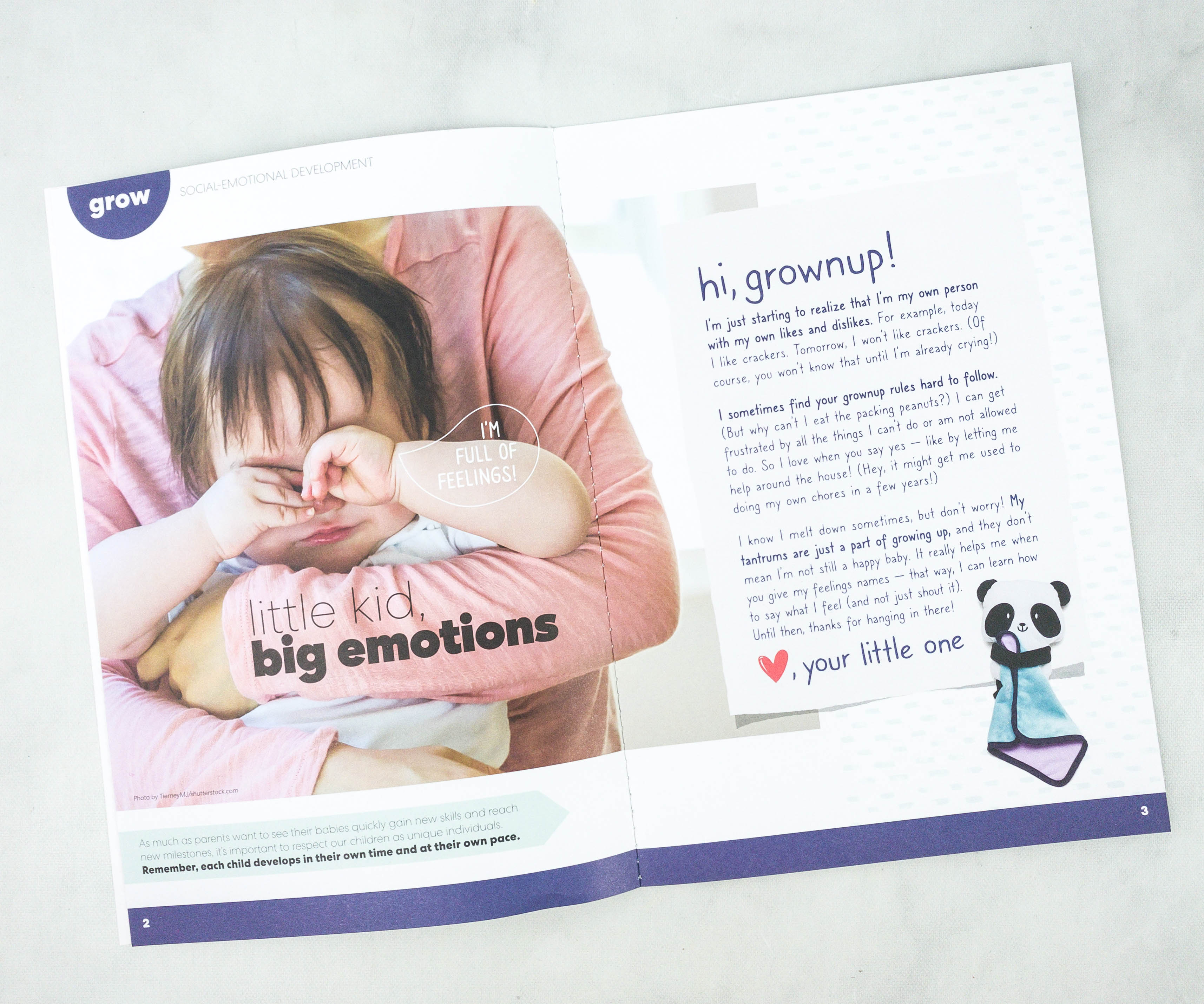
To help us understand more about our babies, they even included an article that tells us about the little kid’s big emotion!
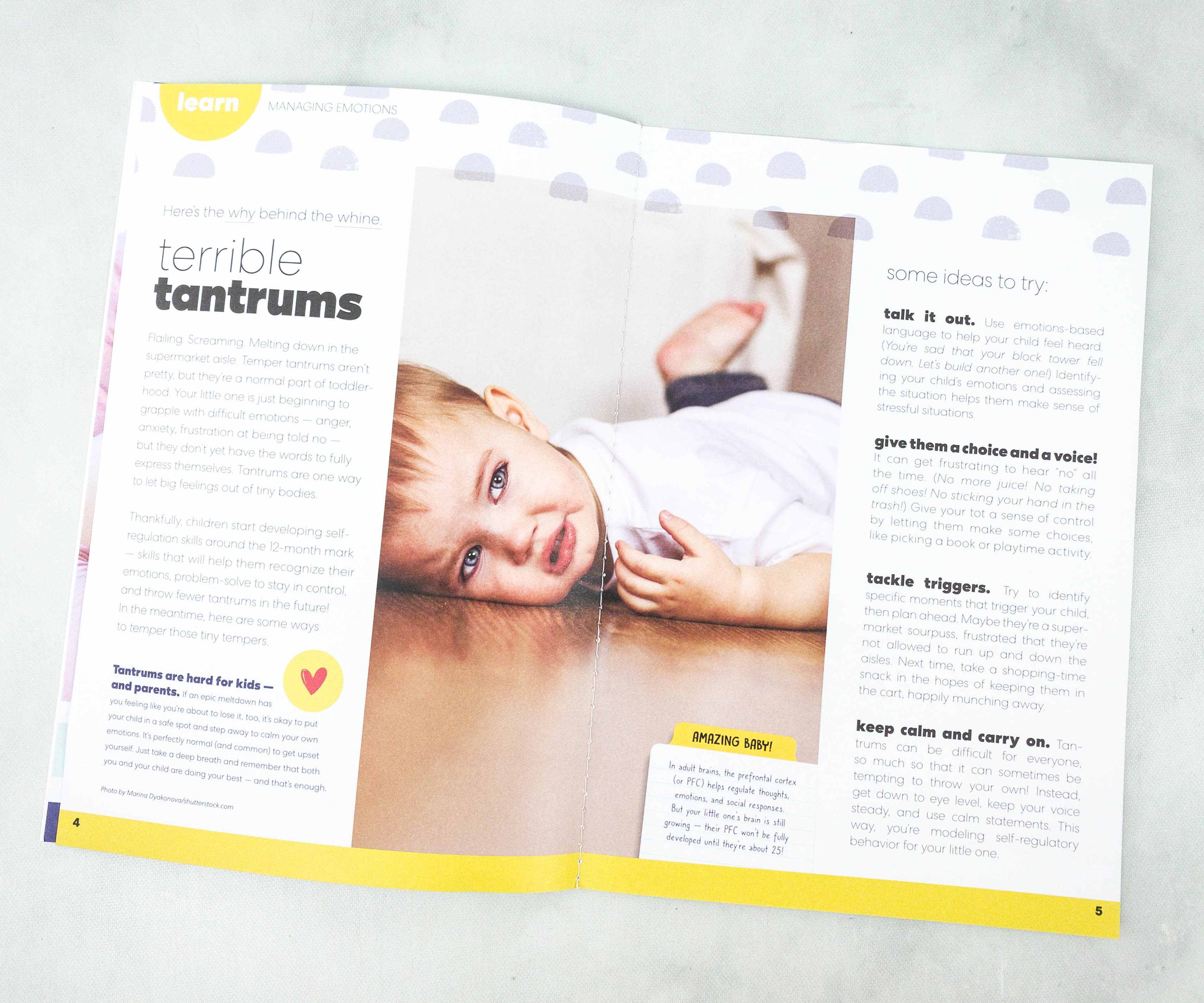
This part of the booklet explains some reasons behind a kid’s terrible tantrums.
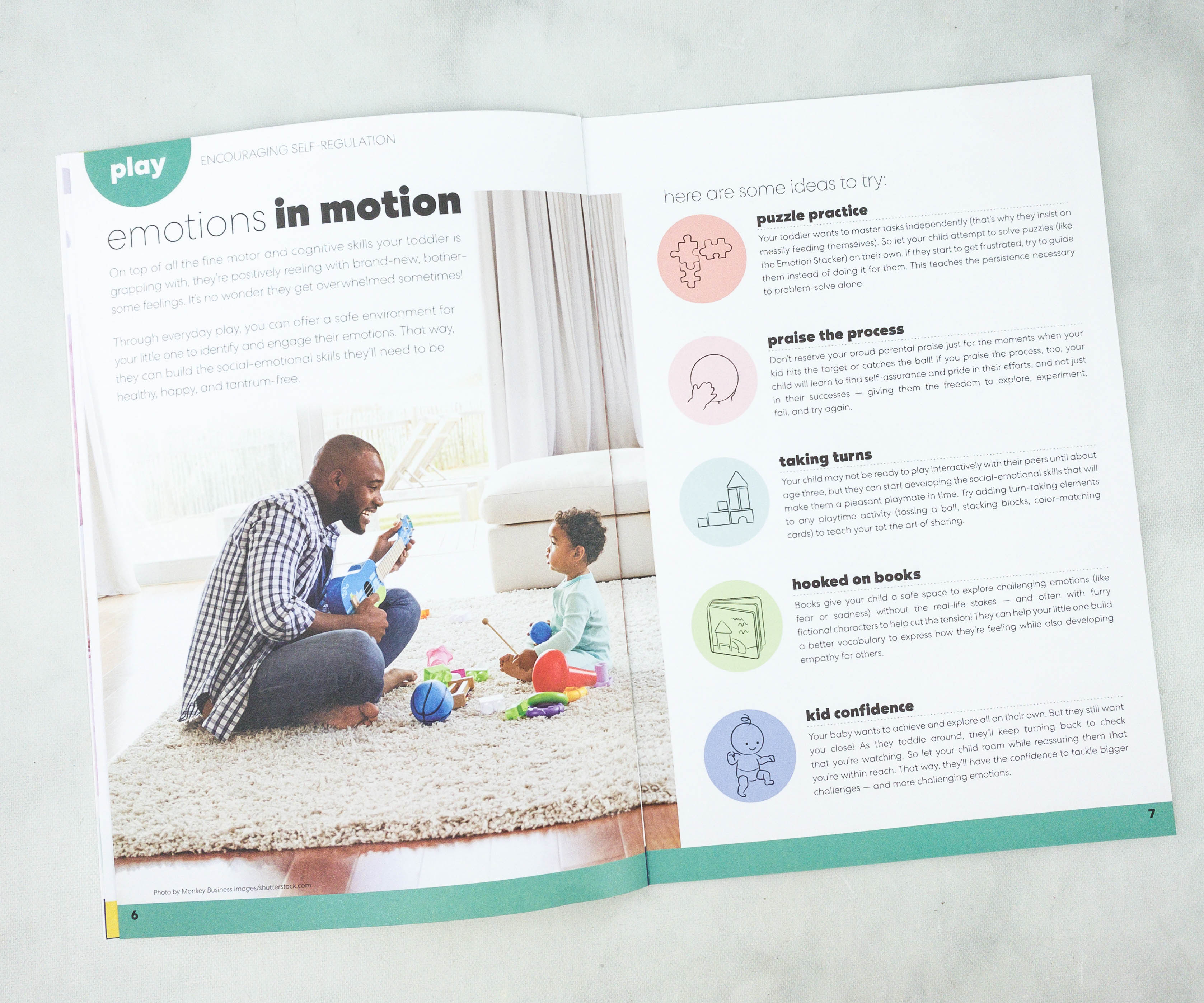
Another feature in this booklet is a list of ideas that we can try to encourage our kids to self-regulate. This includes puzzle practice, praising the process, taking turns, and more!
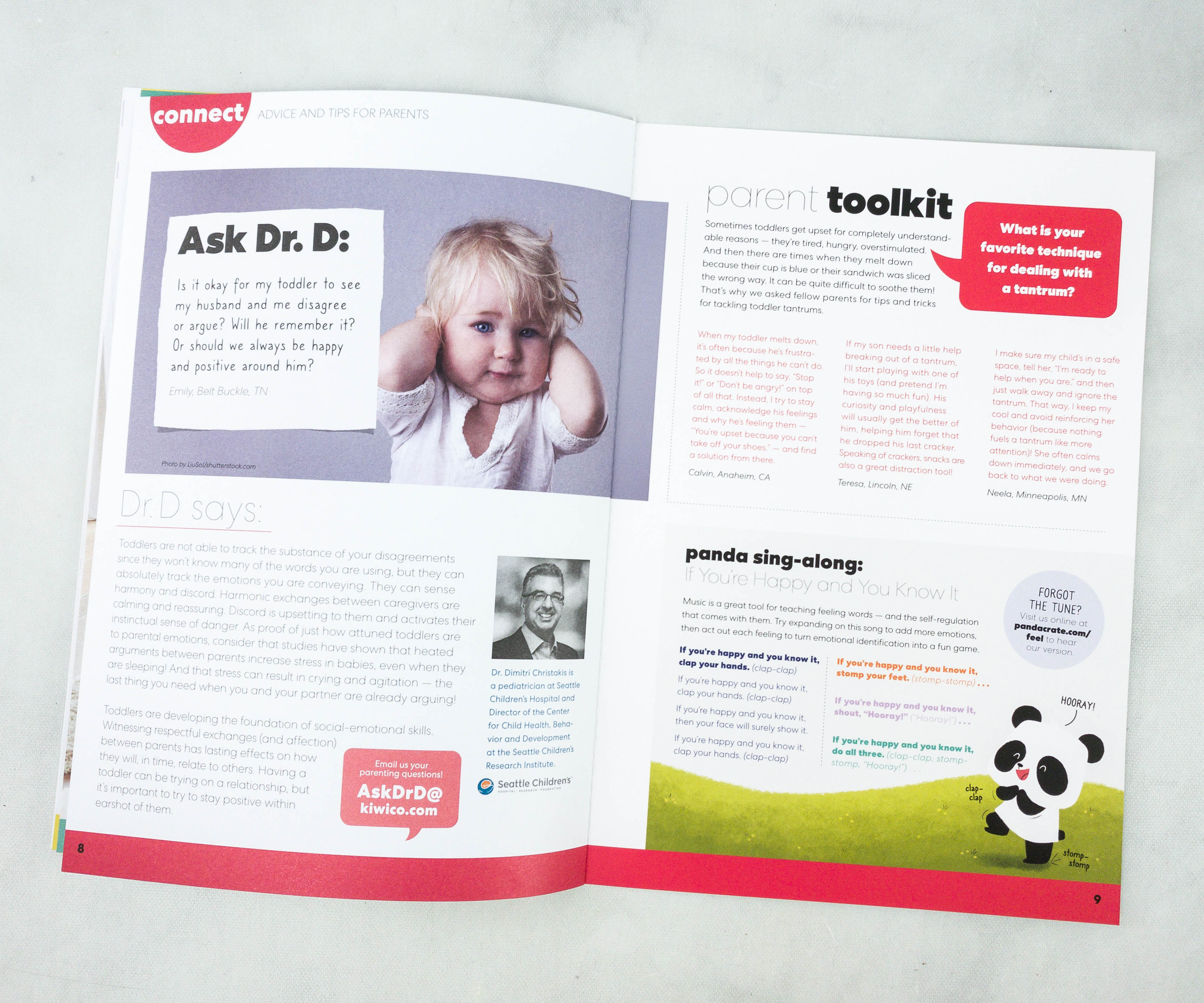
Here’s a column by Dr. Dimitri Christakis, which provides useful tips and advice for parents. This month, he answered a question regarding a toddler’s ability to process an argument and if they can remember it.
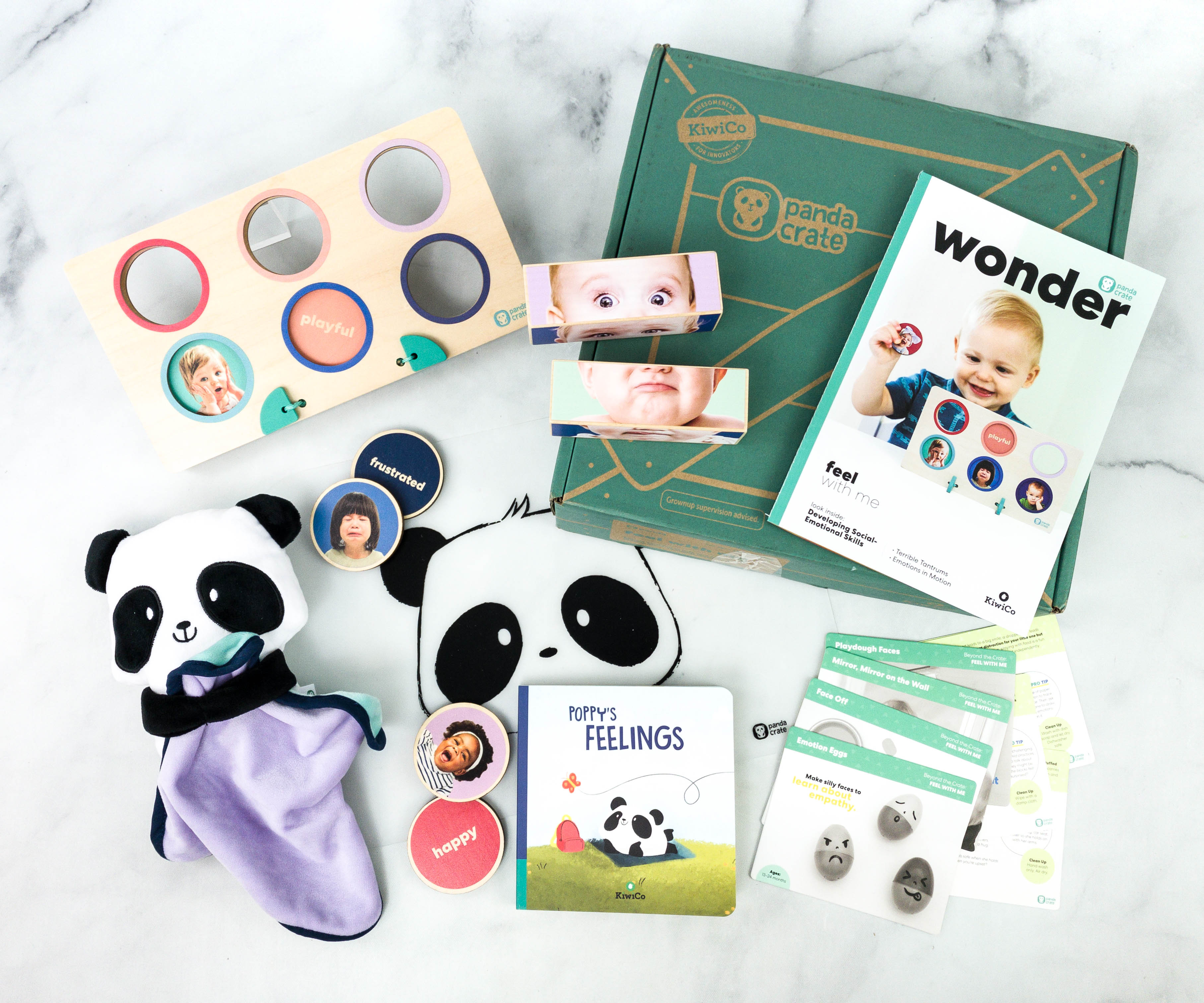
Everything in my box!
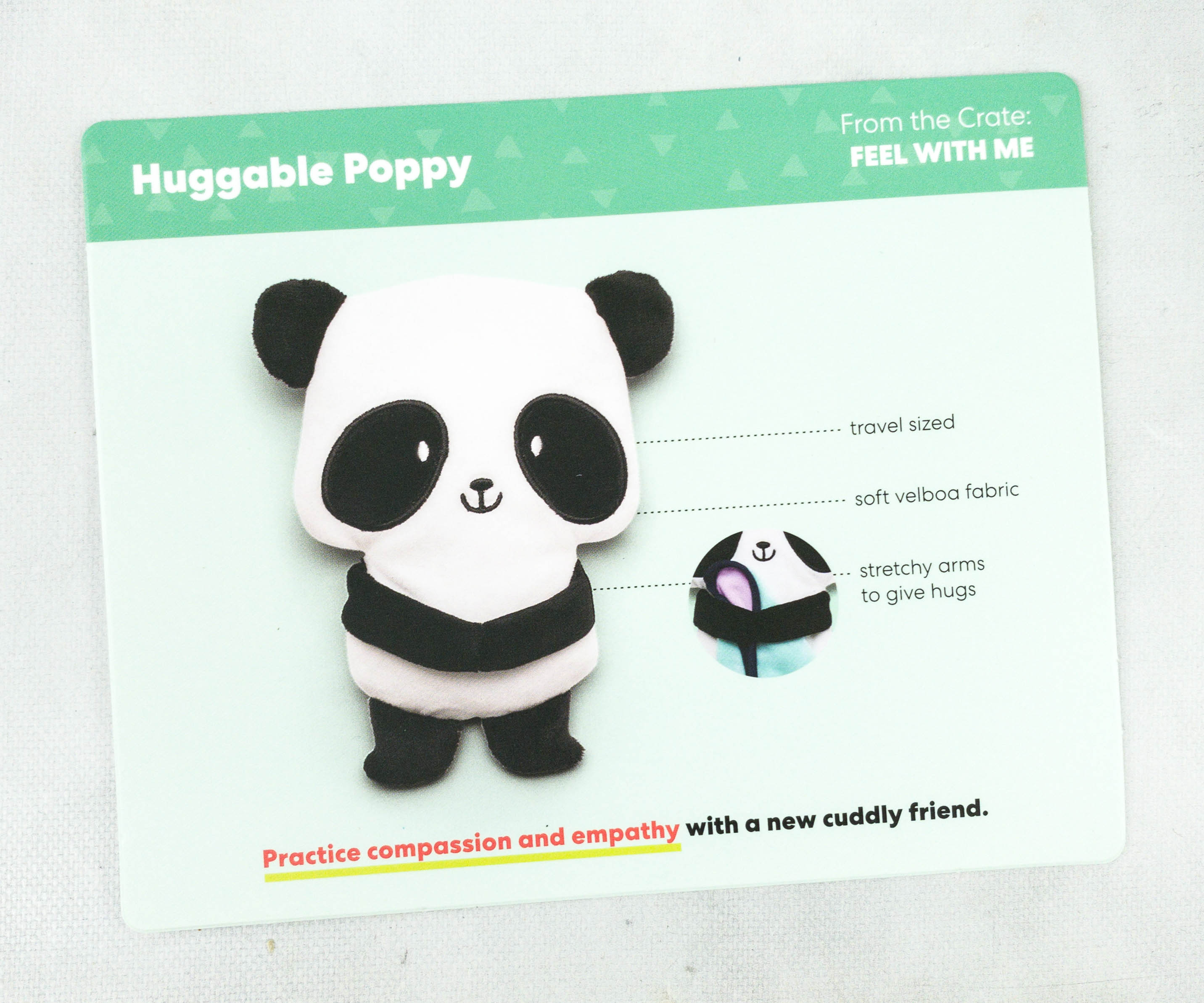
Huggable Poppy. This cuddly panda toy is designed to help toddlers practice compassion and empathy. It’s small enough to bring on the go, and you can even clip it on a bag or the car seat.

Stuffed animals have been around for centuries – with good reason. By caring for a stuffed animal, little ones are learning how to take care of others. When your toddler gently carries a stuffed animal around or gives it a hug because it’s “sad”, they’re practicing compassion and empathy skills that they’ll later extend to classmates, friends, and you.
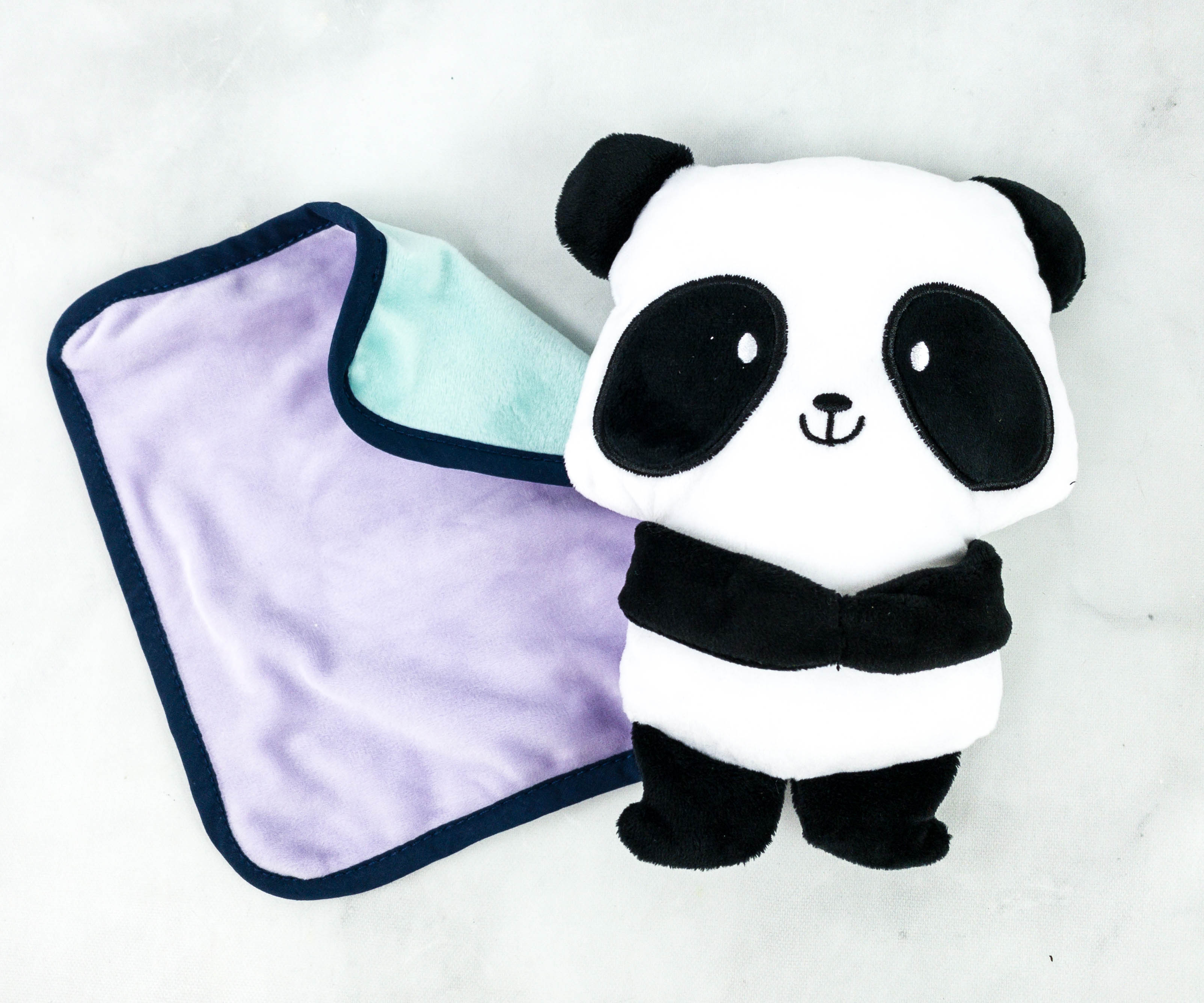
The cute panda toy comes with a small but soft blanket. It’s easy to clean, just hand wash it and then air dry.
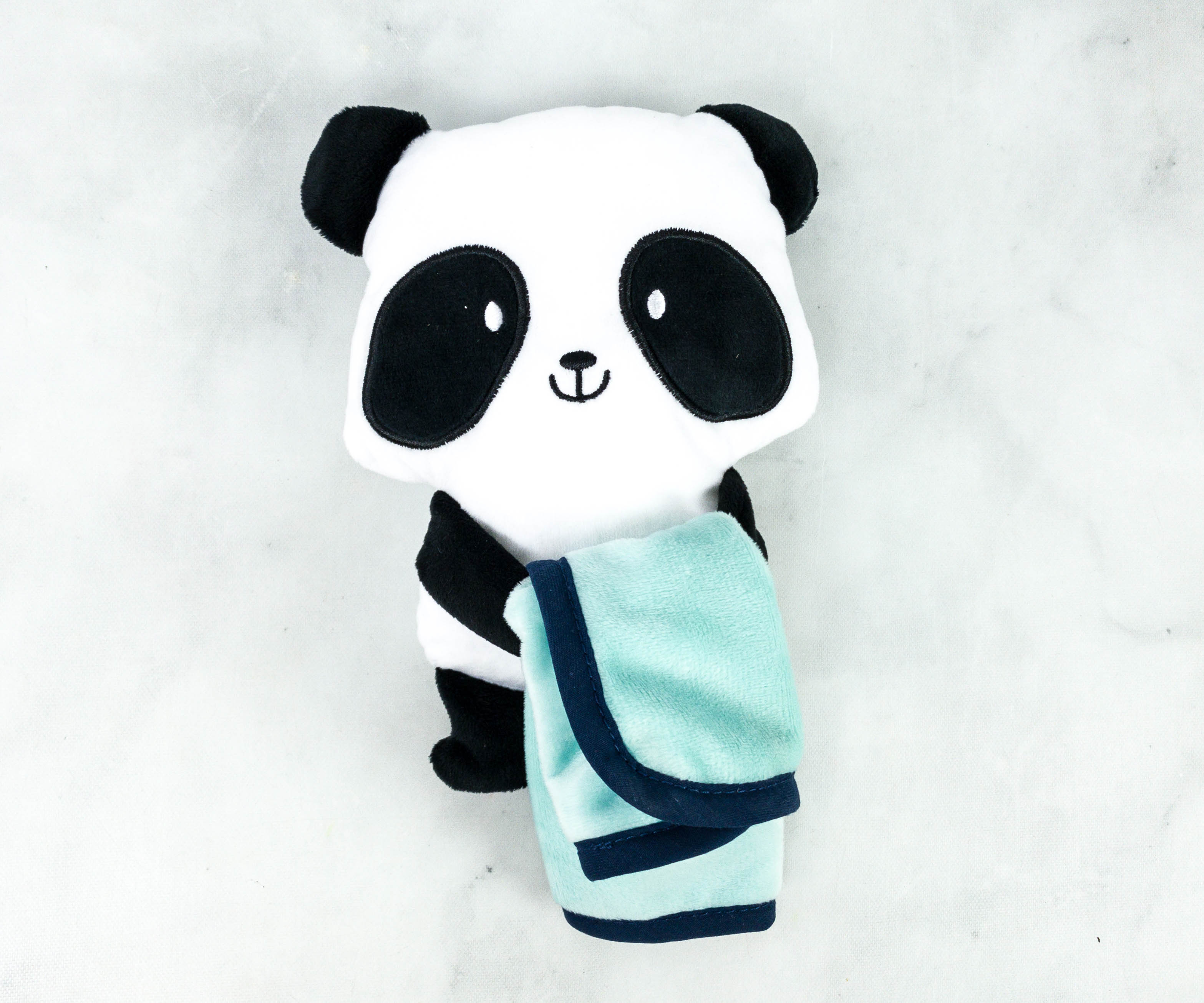
According to the card, you can tuck the blanket in between the panda’s arm to make it look like it’s giving a hug and encourage your kid to comfort it as well.
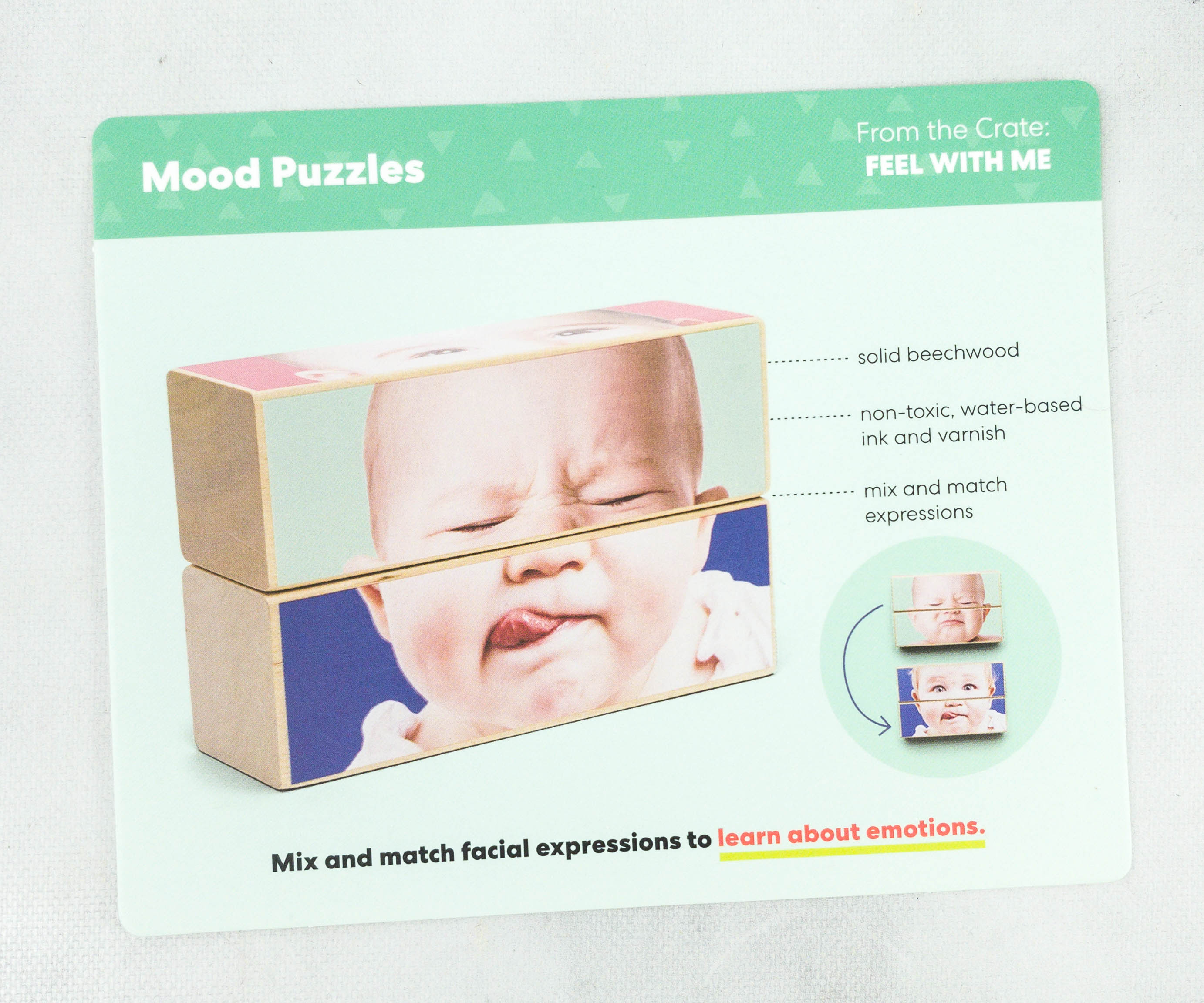
Mood Puzzles. It’s an interactive toy that features a pair of interchangeable wooden blocks that can be mixed and matched to form a facial expression that your kids need to identify.
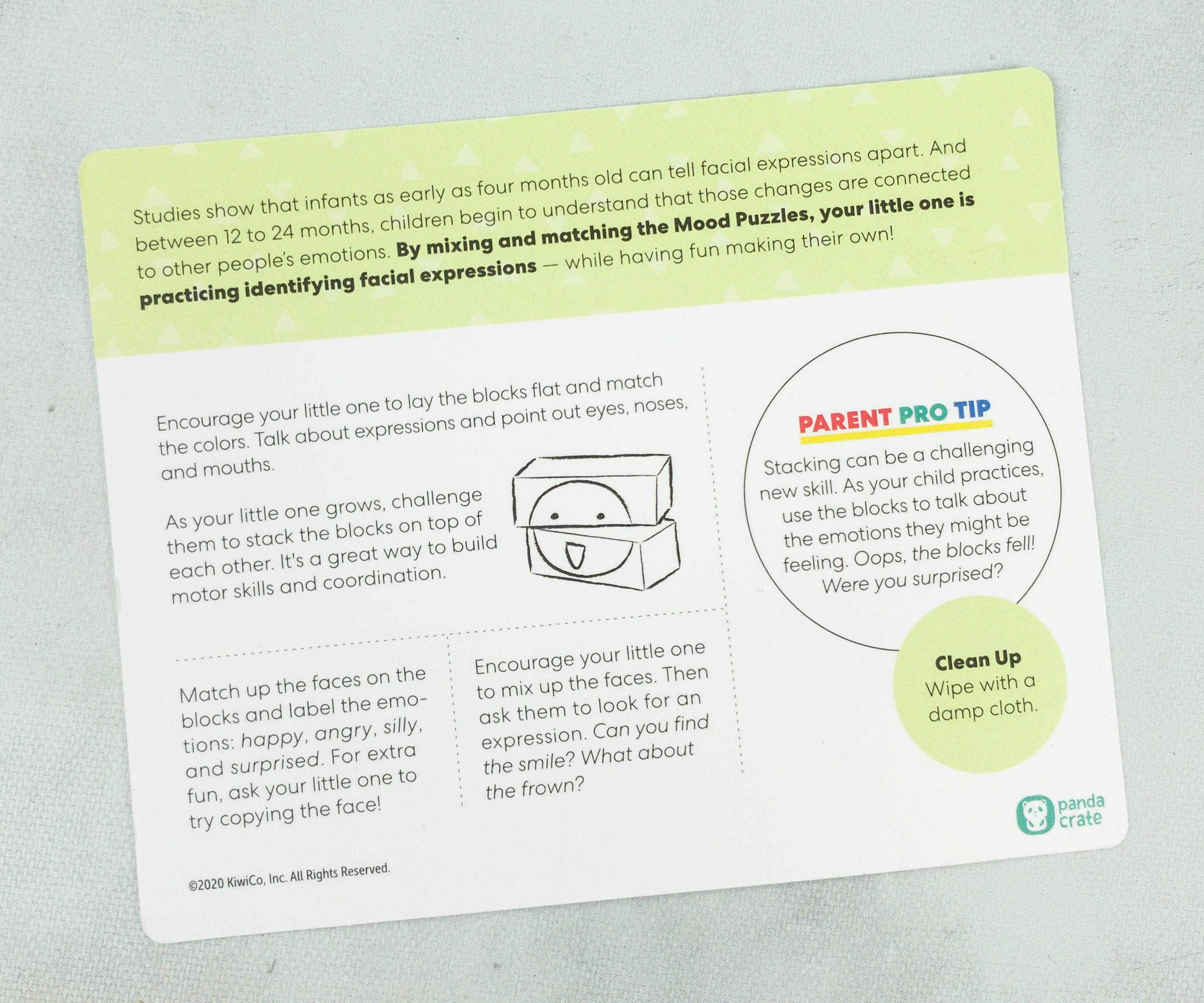
Studies shows that infants as early as four months old can tell facial expressions apart. And between 12 to 24 months, children begin to understand that those changes are connected to other people’s emotions. By mixing and matching the Mood Puzzles, your little one is practicing identifying facial expressions – while having fun making their own!
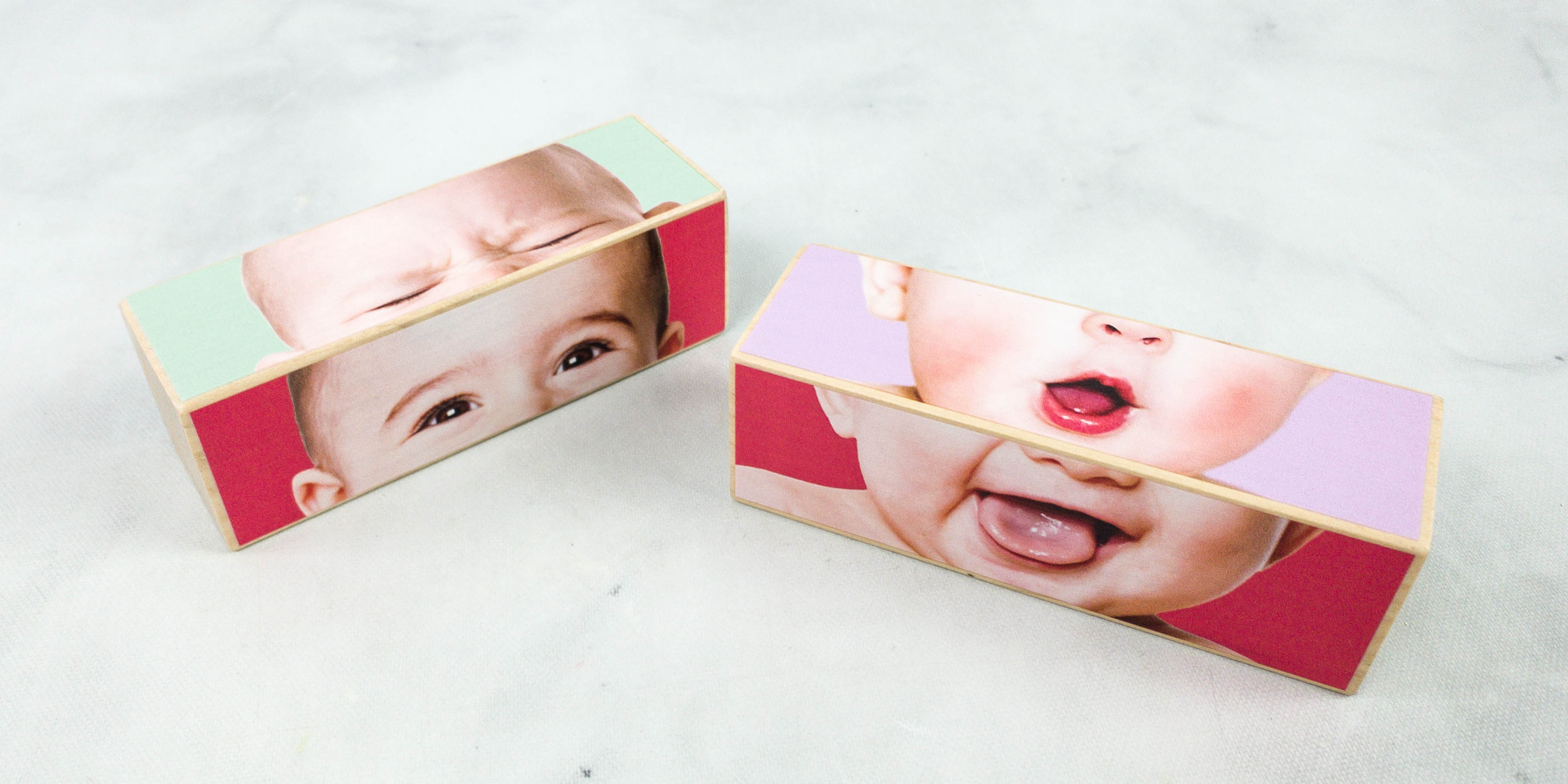
The kit includes two wooden blocks, with each one bearing a facial feature of the upper and lower part of the baby’s face.
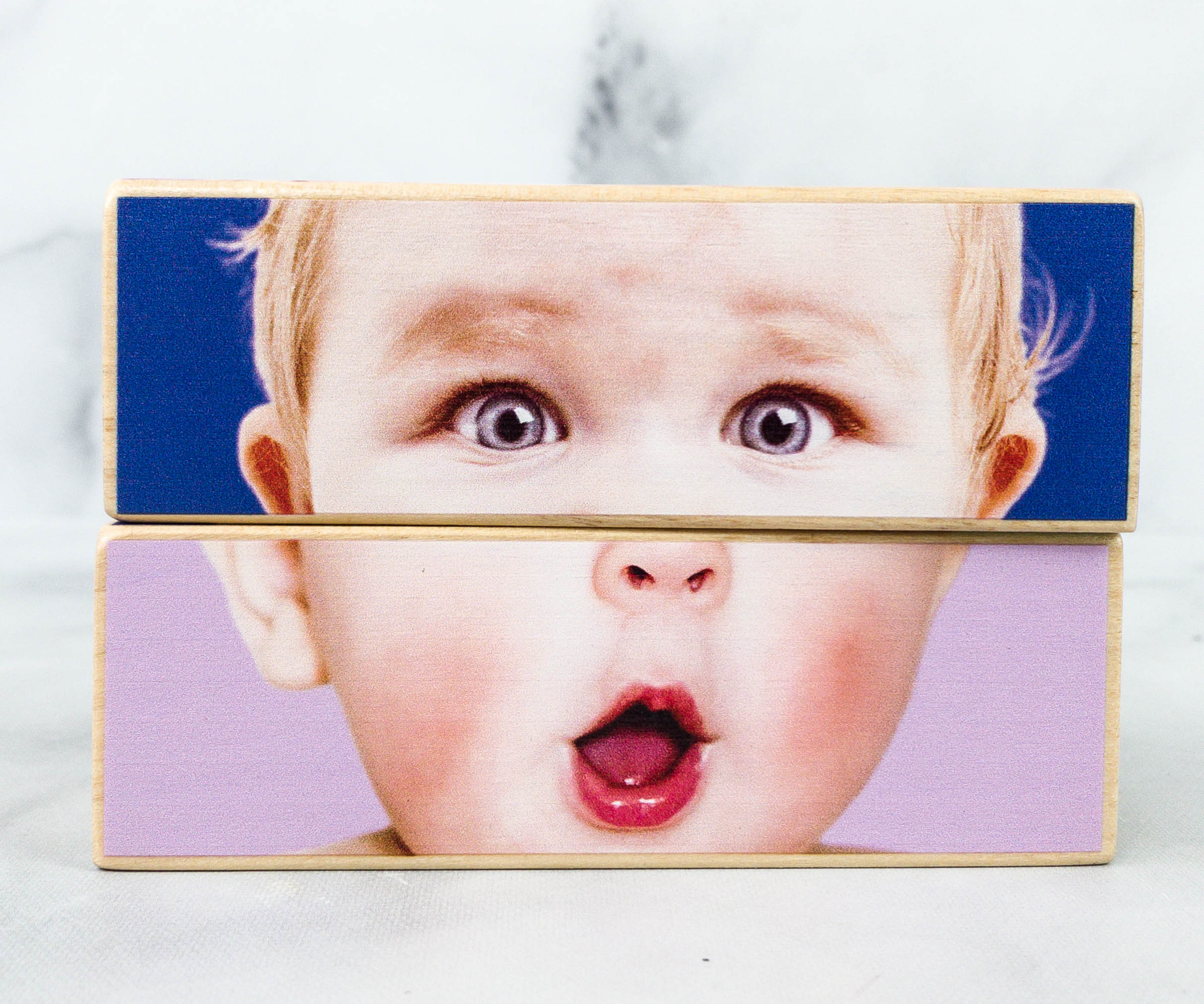
You can ask your toddler to stack the wooden blocks flat, match the color, and identify the emotion of the baby that was formed in the picture.
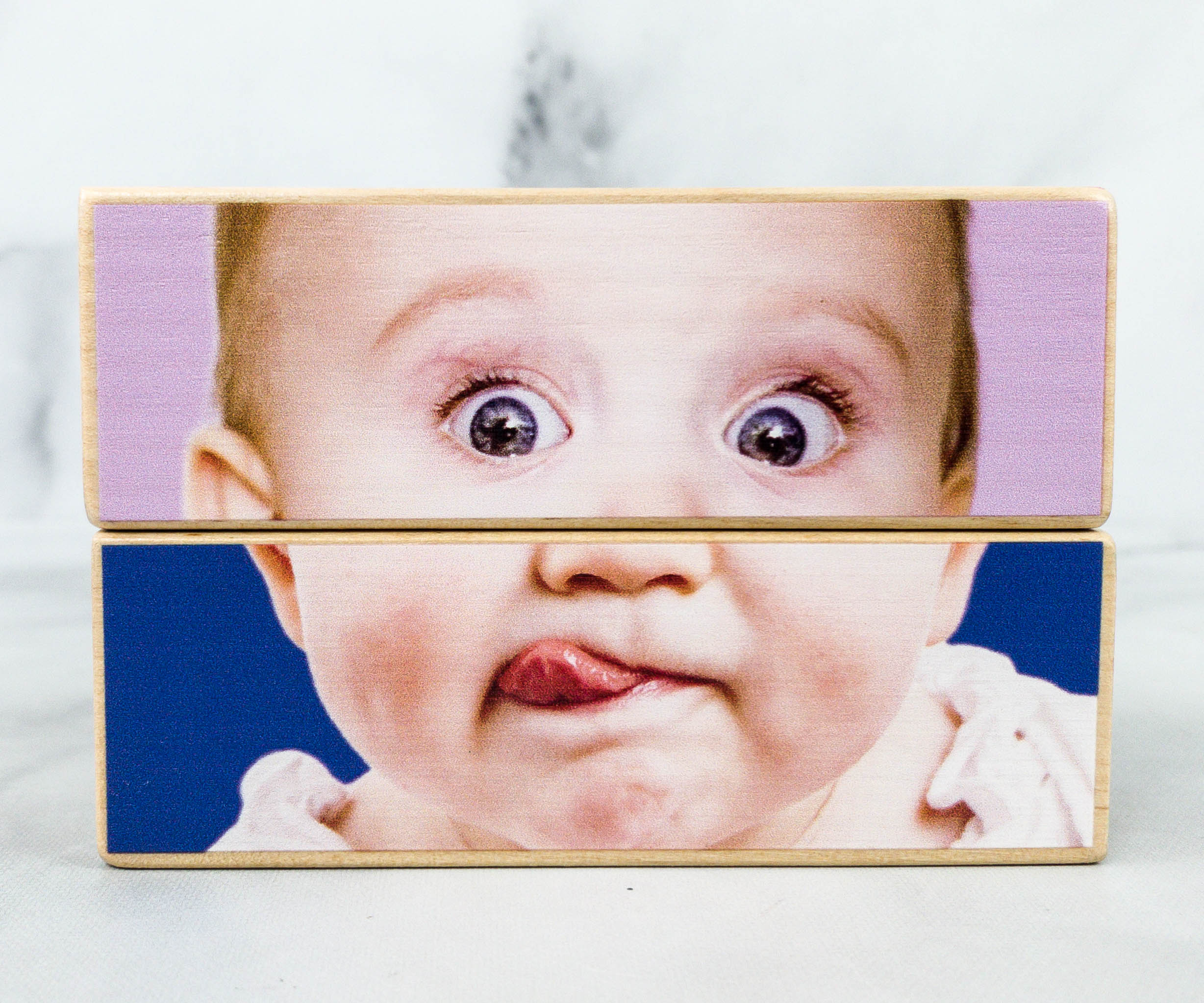
You can also ask them to randomly pair the side of the blocks to be matched to create a different expression! This is such a fun and unique toy that you can use to teach kids about emotions. Cleaning the blocks is also easy because you only need to wipe them with a damp cloth.
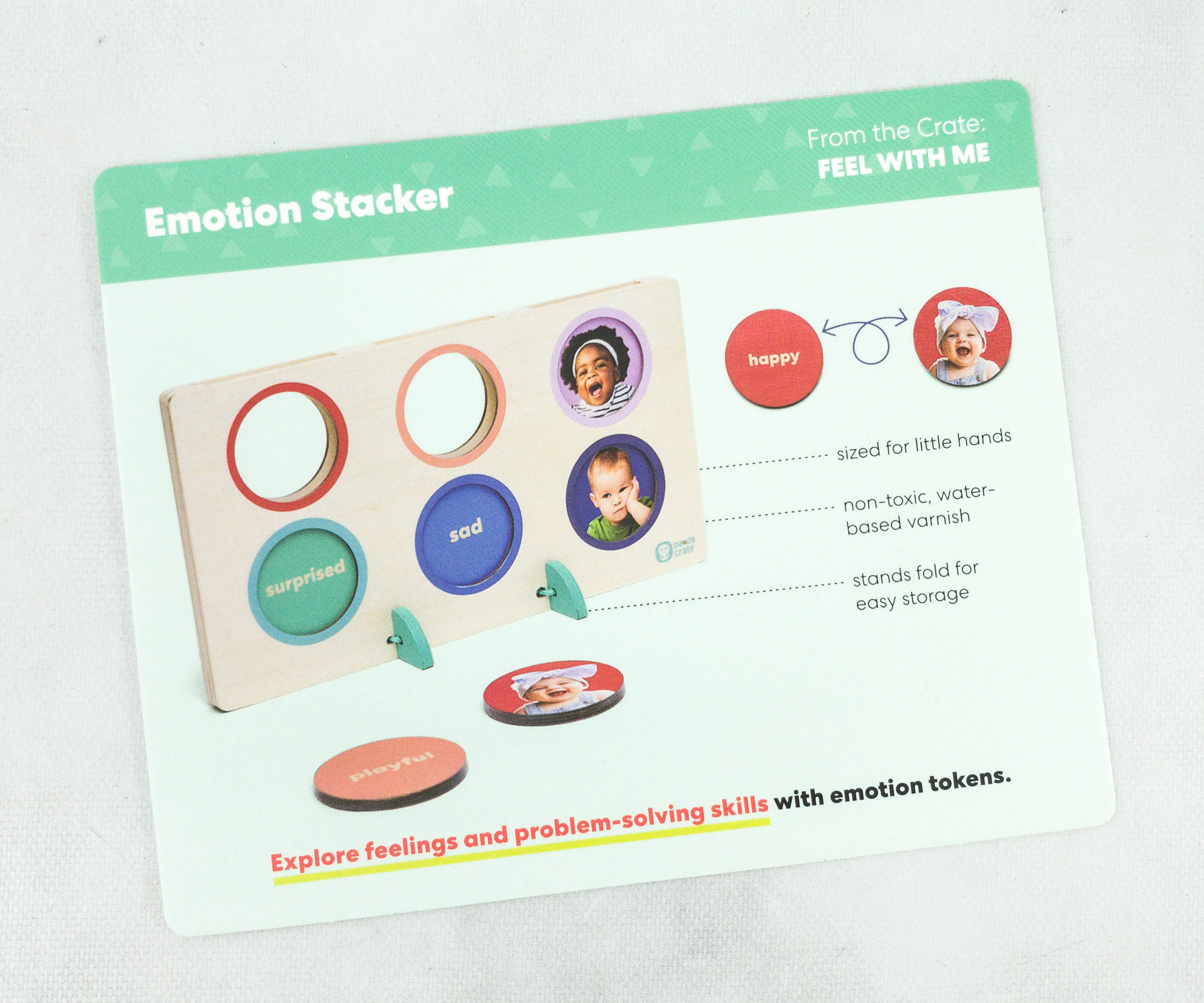
Emotion Stacker. Here’s another fun toy featuring photos to help toddlers explore feelings. Since it’s a stacker toy, it even helps with their problem-solving skills!
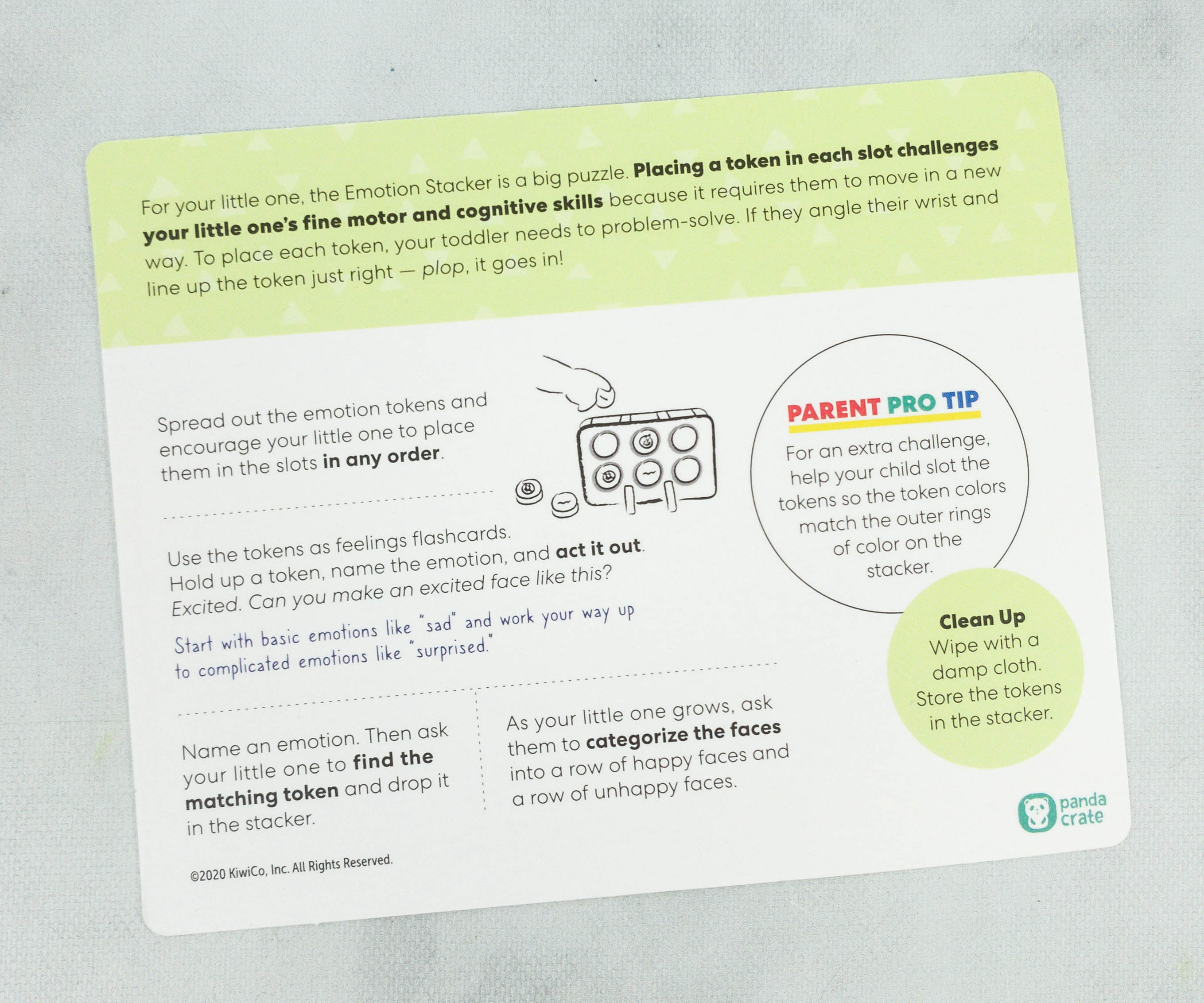
For your little one, the Emotion Stacker is a big puzzle. Placing a token in each slot challenges your little one’s fine motor and cognitive skills because it requires them to move in a new way. To place each token, your toddler needs to problem-solve. If they angle their wrist and line up the token just – plop. It goes in!
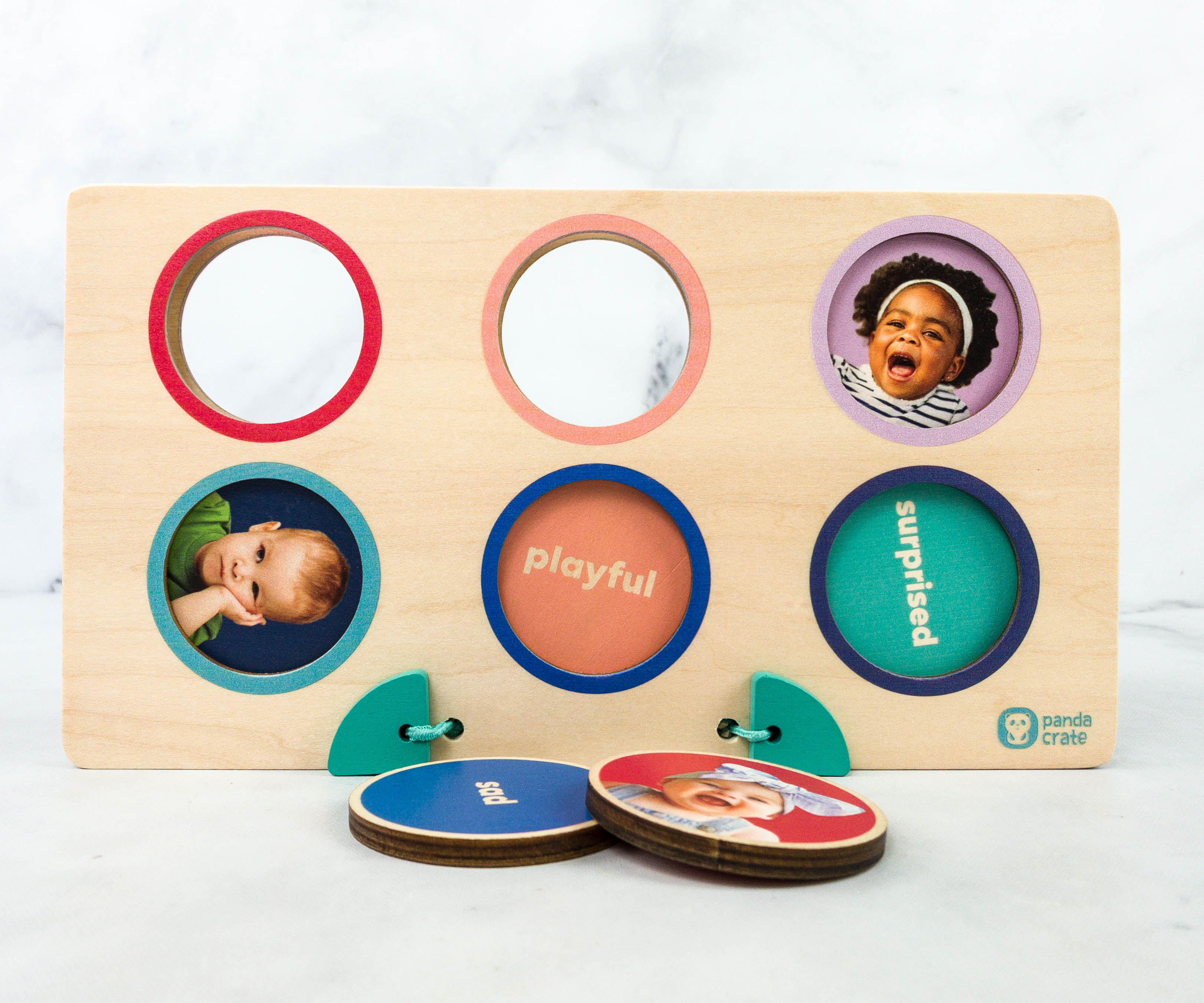
This toy is made from premium-quality wood with a non-toxic, water-based varnish base, foldable stand, and emotion-themed tokens!
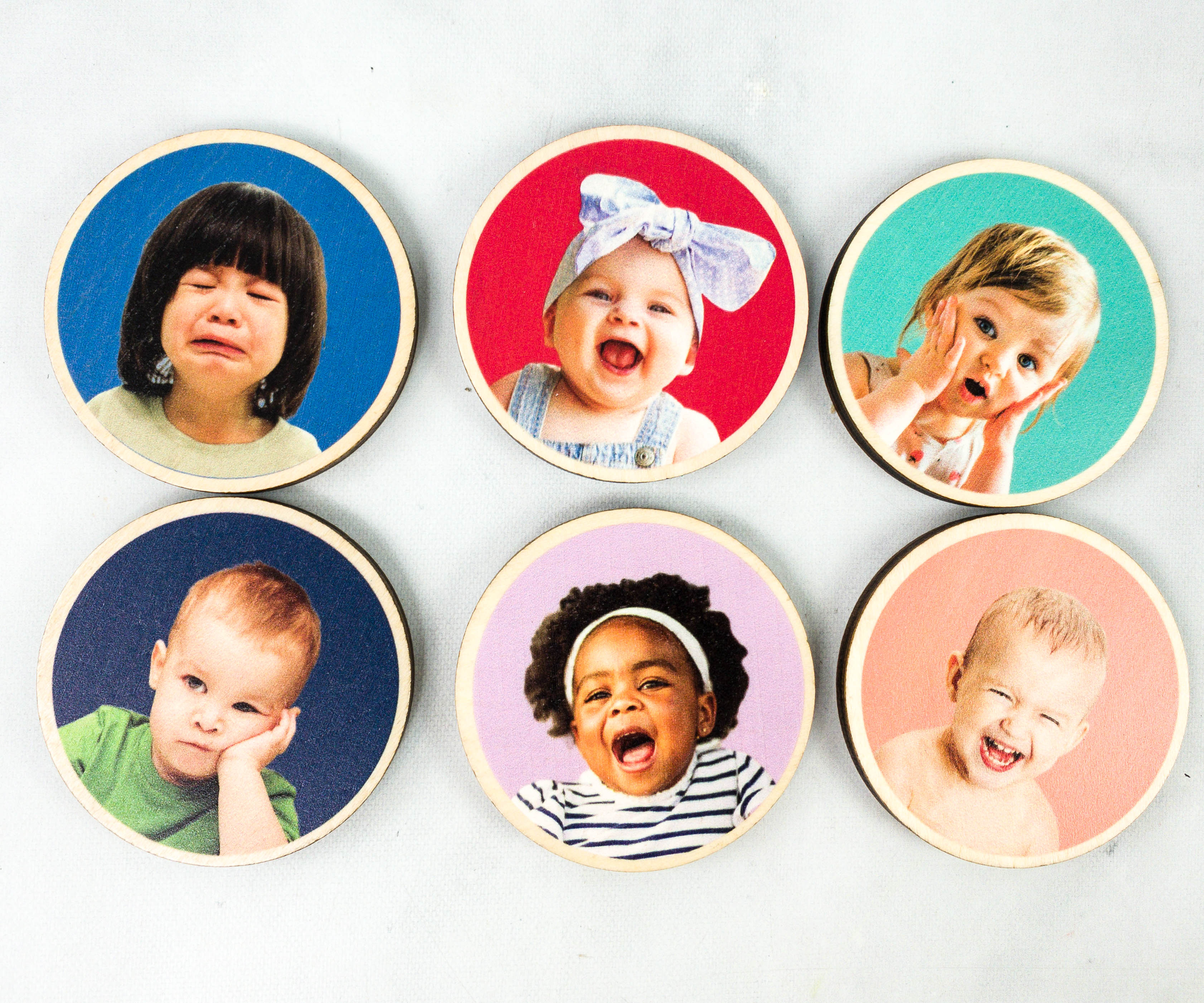
One side of the token features different kids showing different kinds of emotions. According to the card, you can use these like flashcards! Simply hold up the token, name the emotion, and then act it out. You can also name an emotion and ask your toddler to find the matching token!
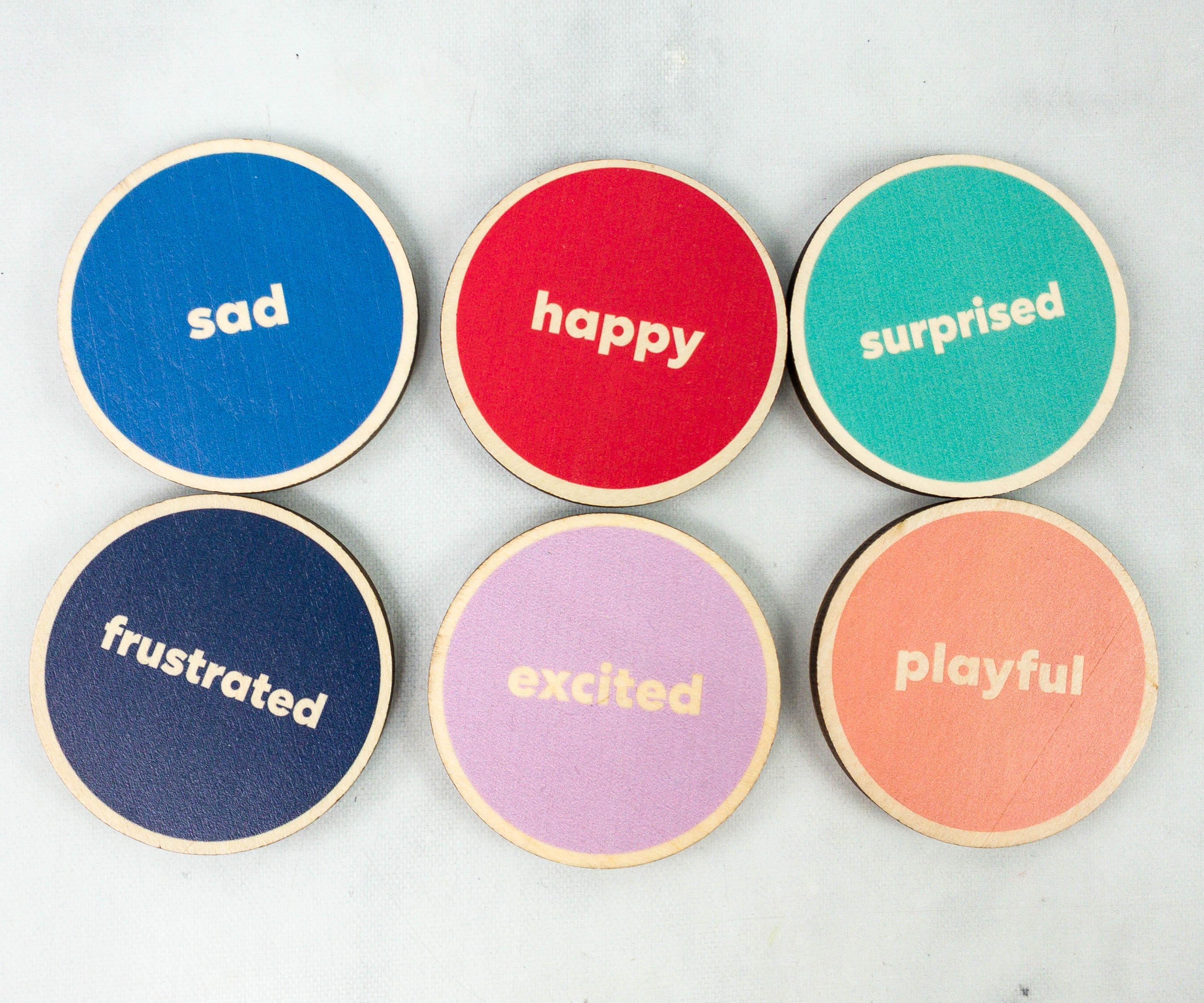
On the flip side of the token, you’ll see the corresponding emotion for each photo, including sad, happy, surprised, frustrated, excited, and playful!
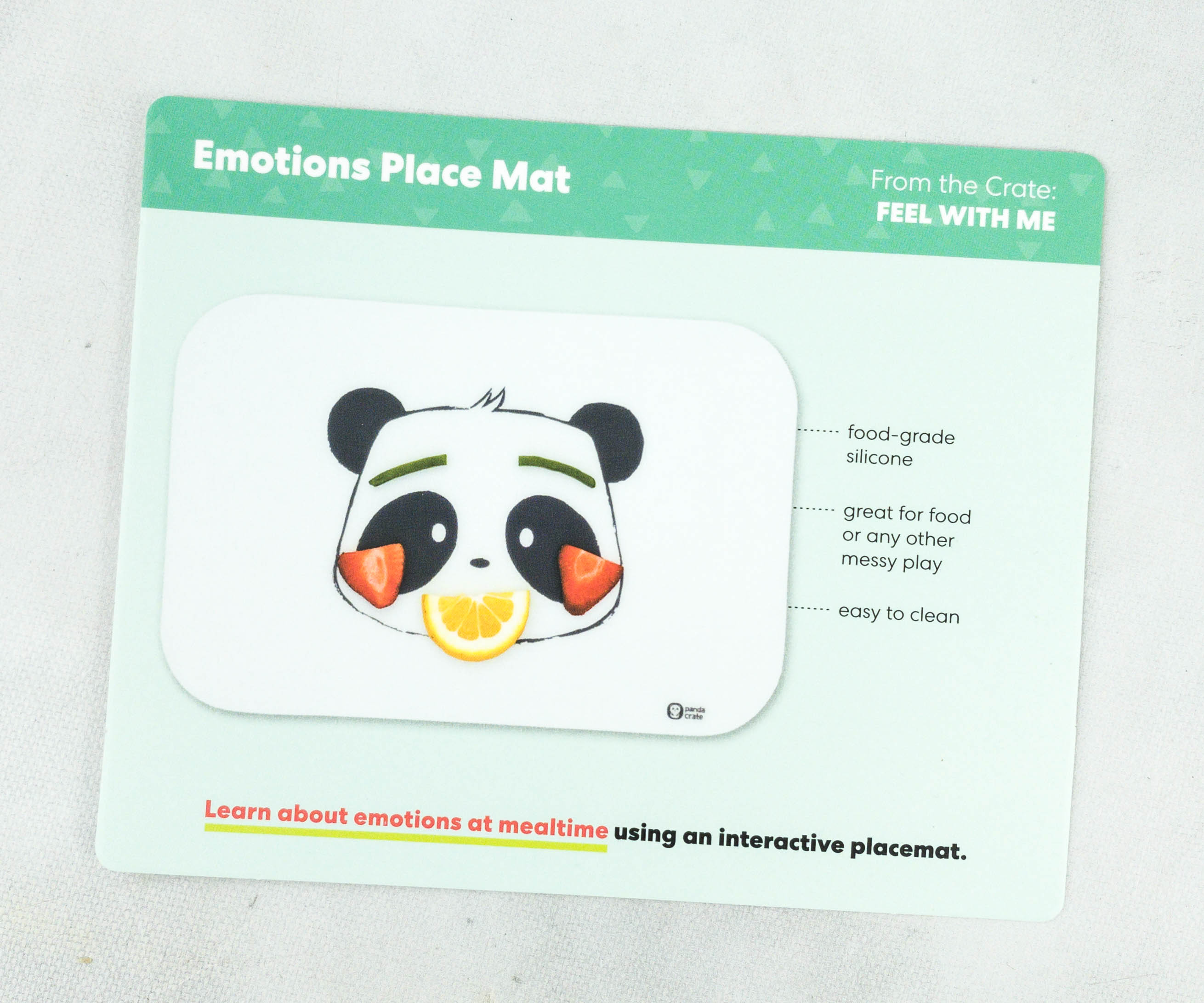
Emotions Place Mat. Mealtime can also be used to learn about emotions, so they included this interactive placemat!
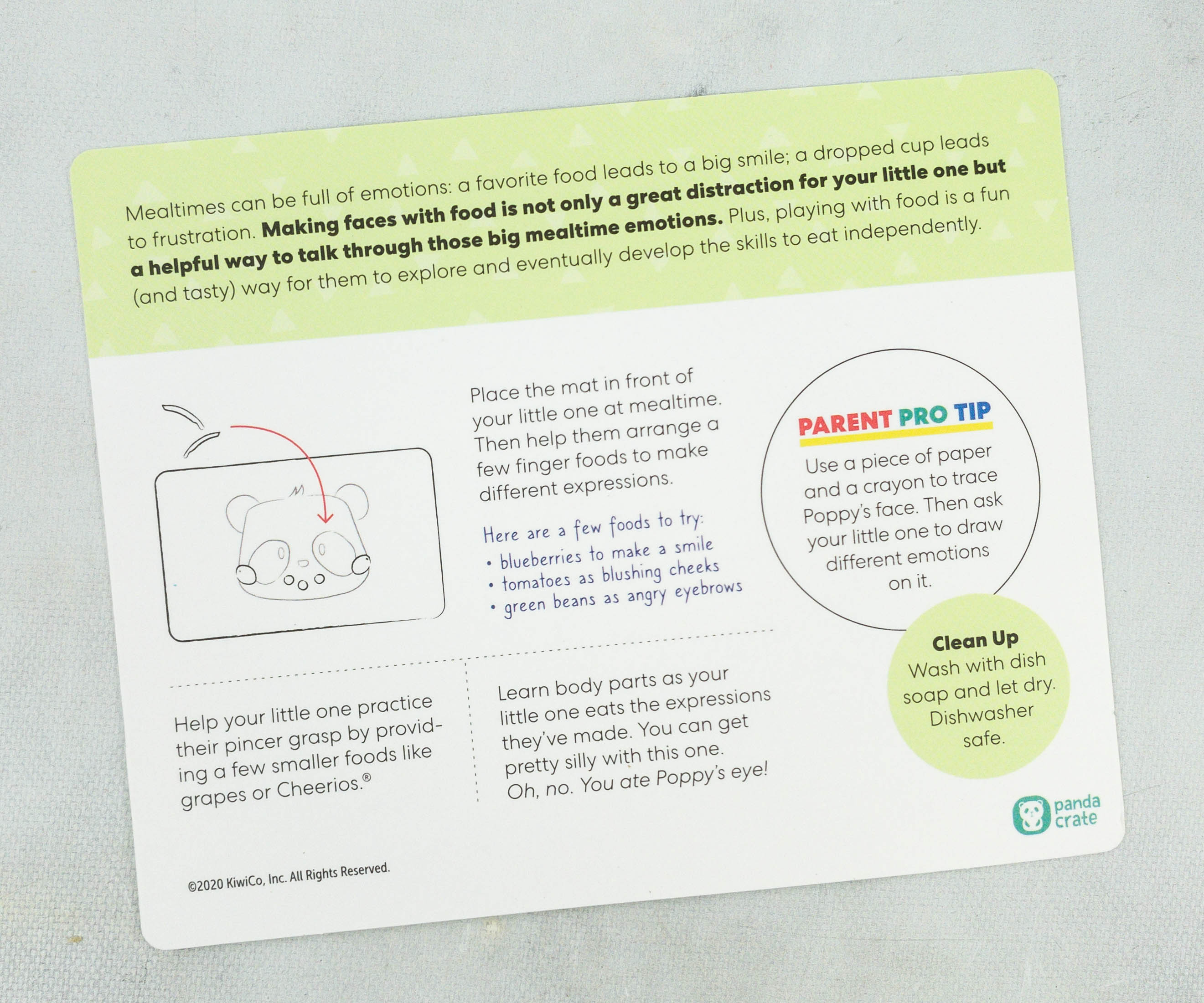
Mealtimes can be full of emotions: a favorite food leads to a big smile; a dropped cup leads to frustration. Making faces with food is not only a great distraction for your little one but a helpful way to talk through those big mealtime emotions. Plus, playing with food is a fun (and tasty) way for them to explore and eventually develop the skills to eat independently.
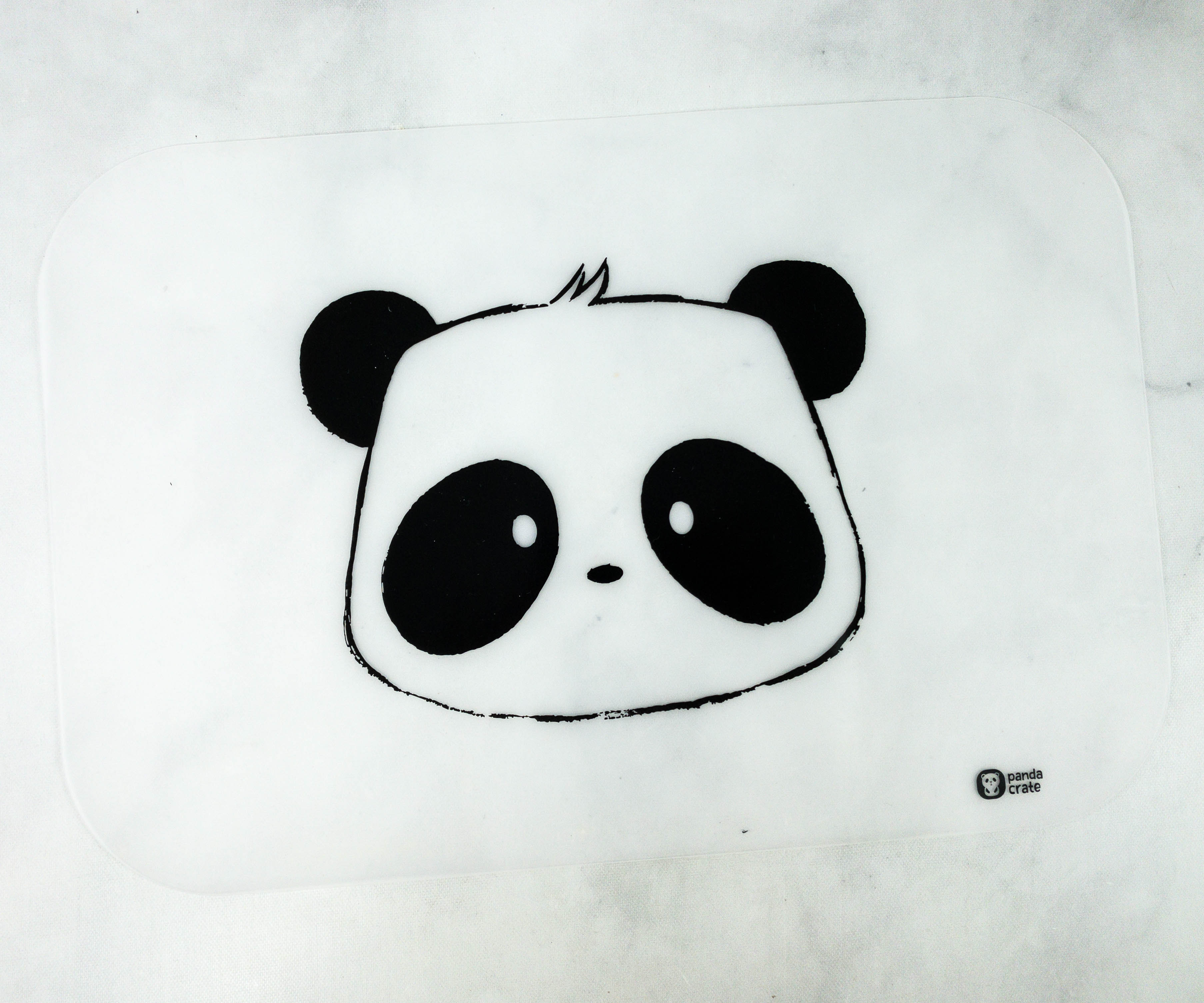
This placemat is made from food-grade silicone and features a cute panda illustration in the middle.
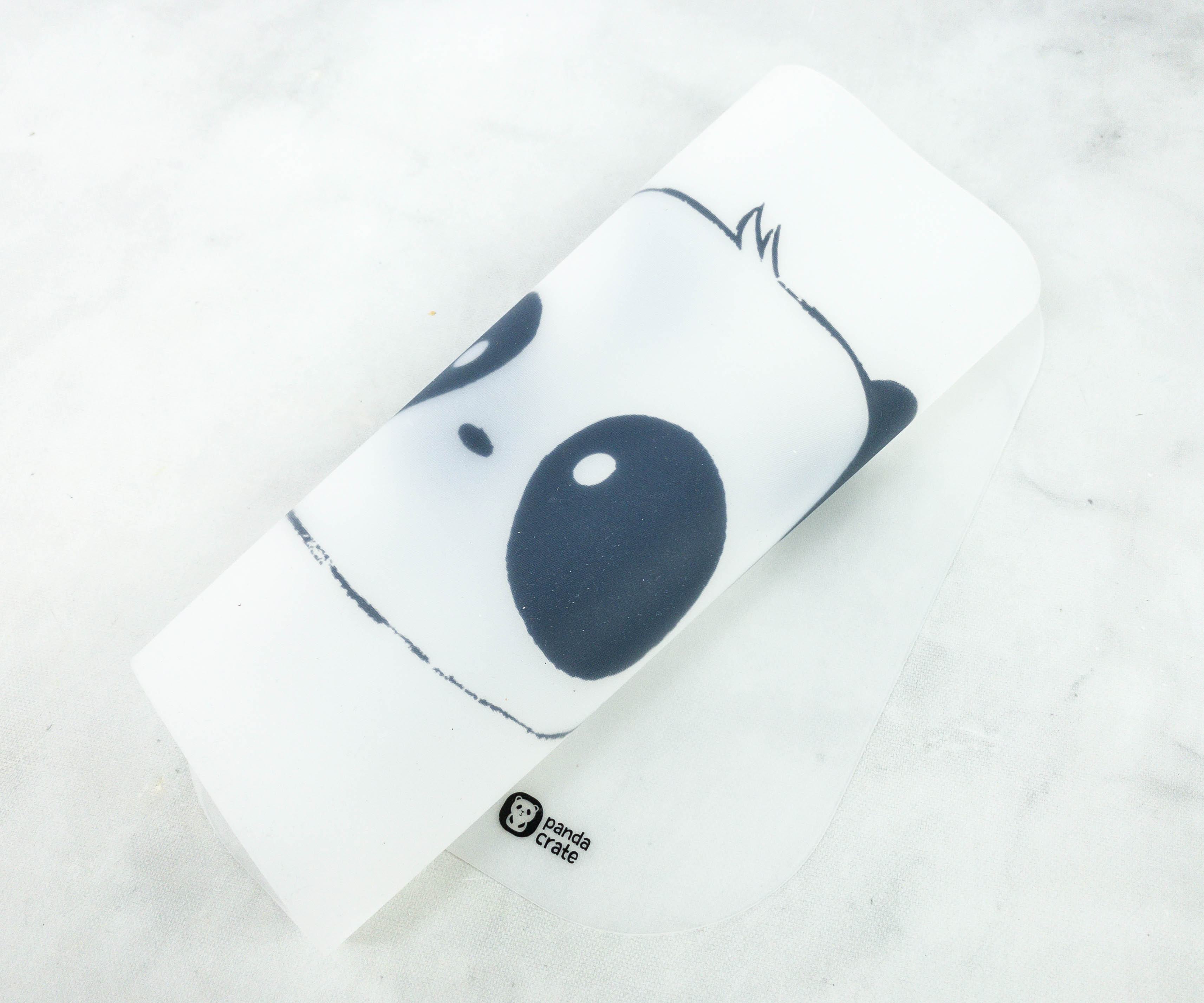
To use, simply lay the mat in front of your little one, and help them arrange a few finger foods to make different expressions. Some of the food that you may include are the blueberries to make a smile, tomatoes as blushing cheeks, and green beans as angry eyebrows.
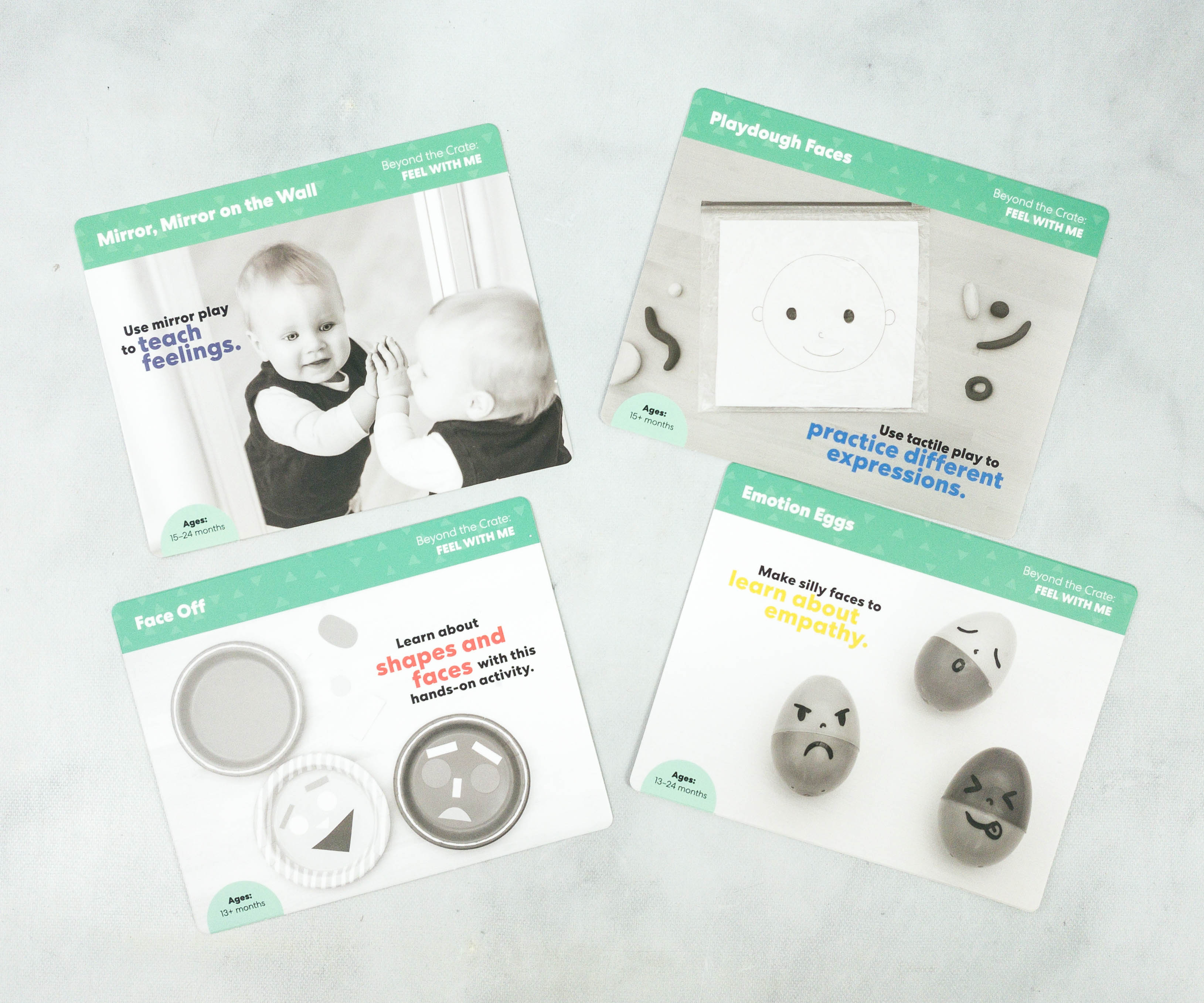
Here are the four Beyond The Crate Cards! These cards feature activities you can do to bond with your baby. It includes Mirror, Mirror on the wall, Playdough faces, Face Off, and Emotion Eggs.
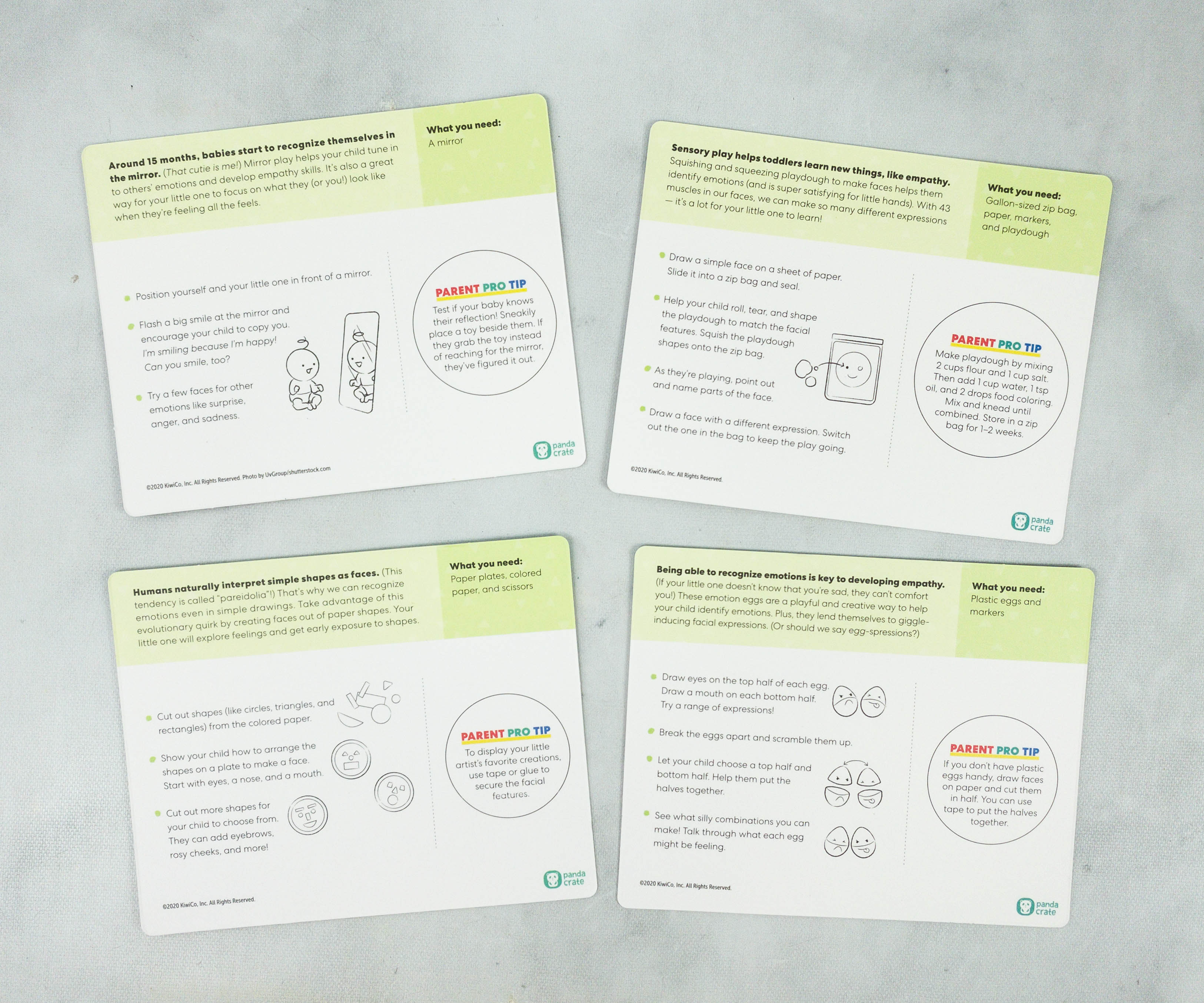
The back of each card contains a list of what you need for the activity and easy-to-follow instructions. There are helpful tips for parents as well.
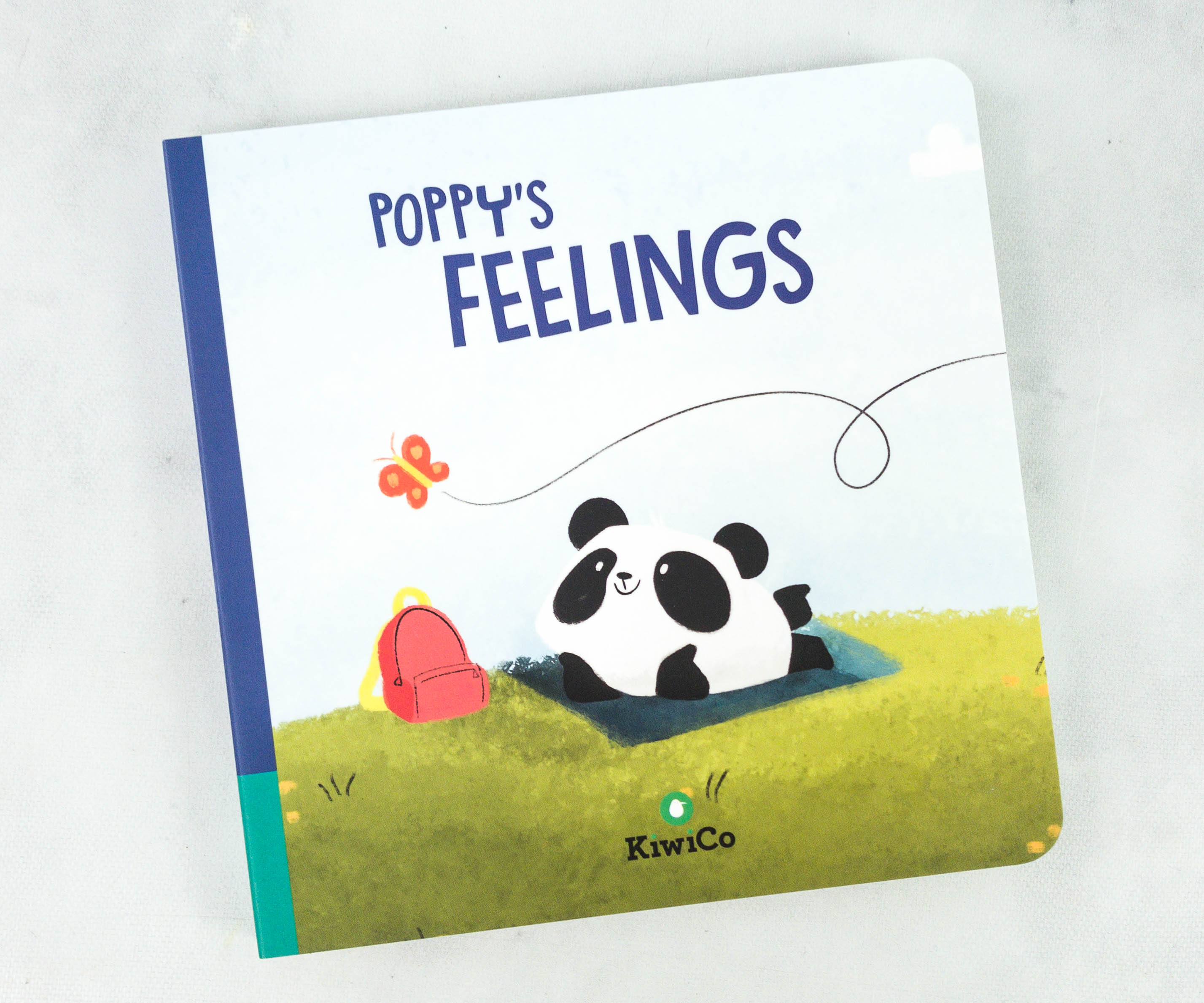
Poppy’s Feelings Book. This month’s box also includes an exclusive Panda Crate book. It’s still in line with the theme as it talks about one’s feelings!
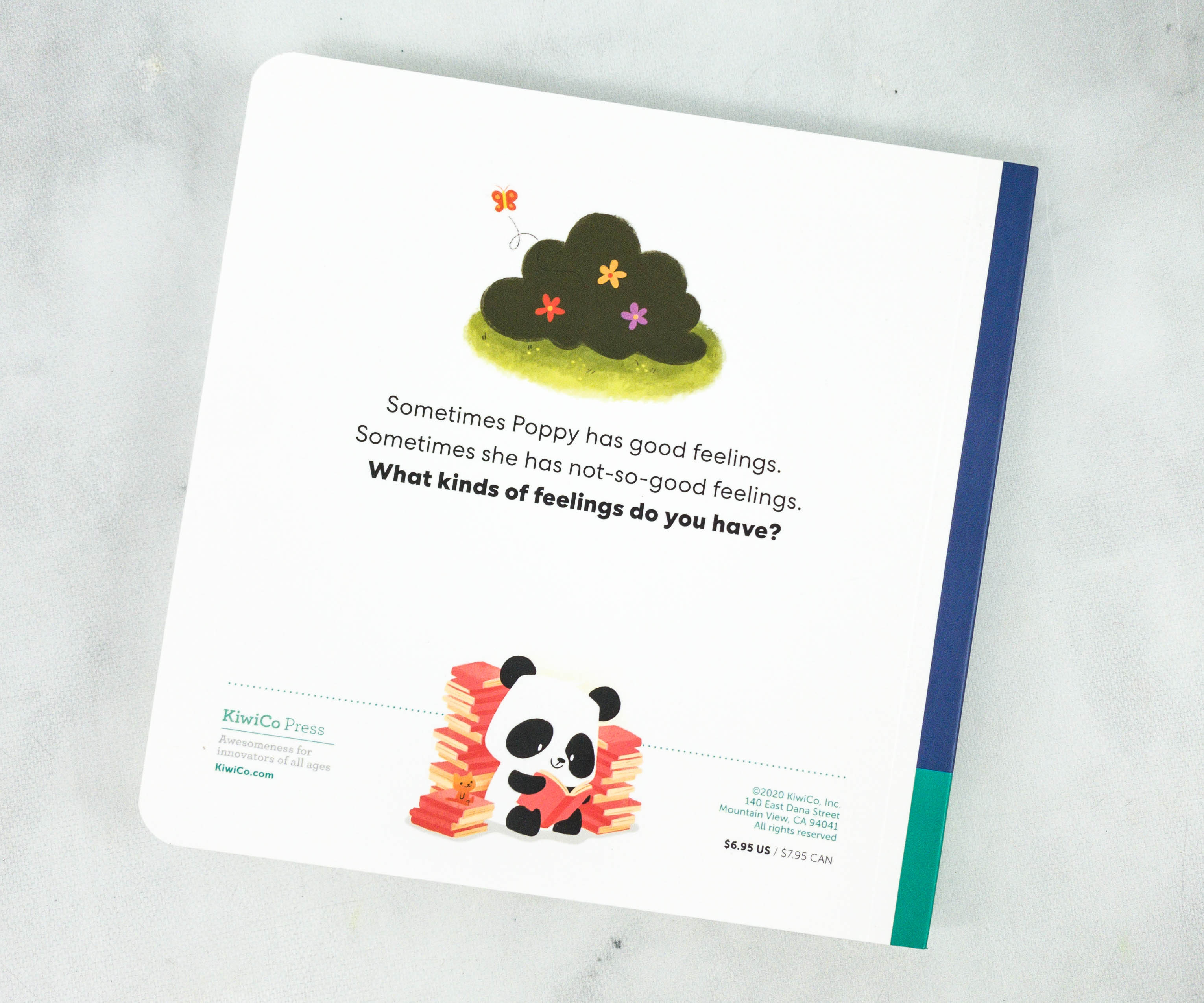
Sometimes Poppy has good feelings.
Sometimes she has not-so-good feelings.
What kinds of feelings do you have?
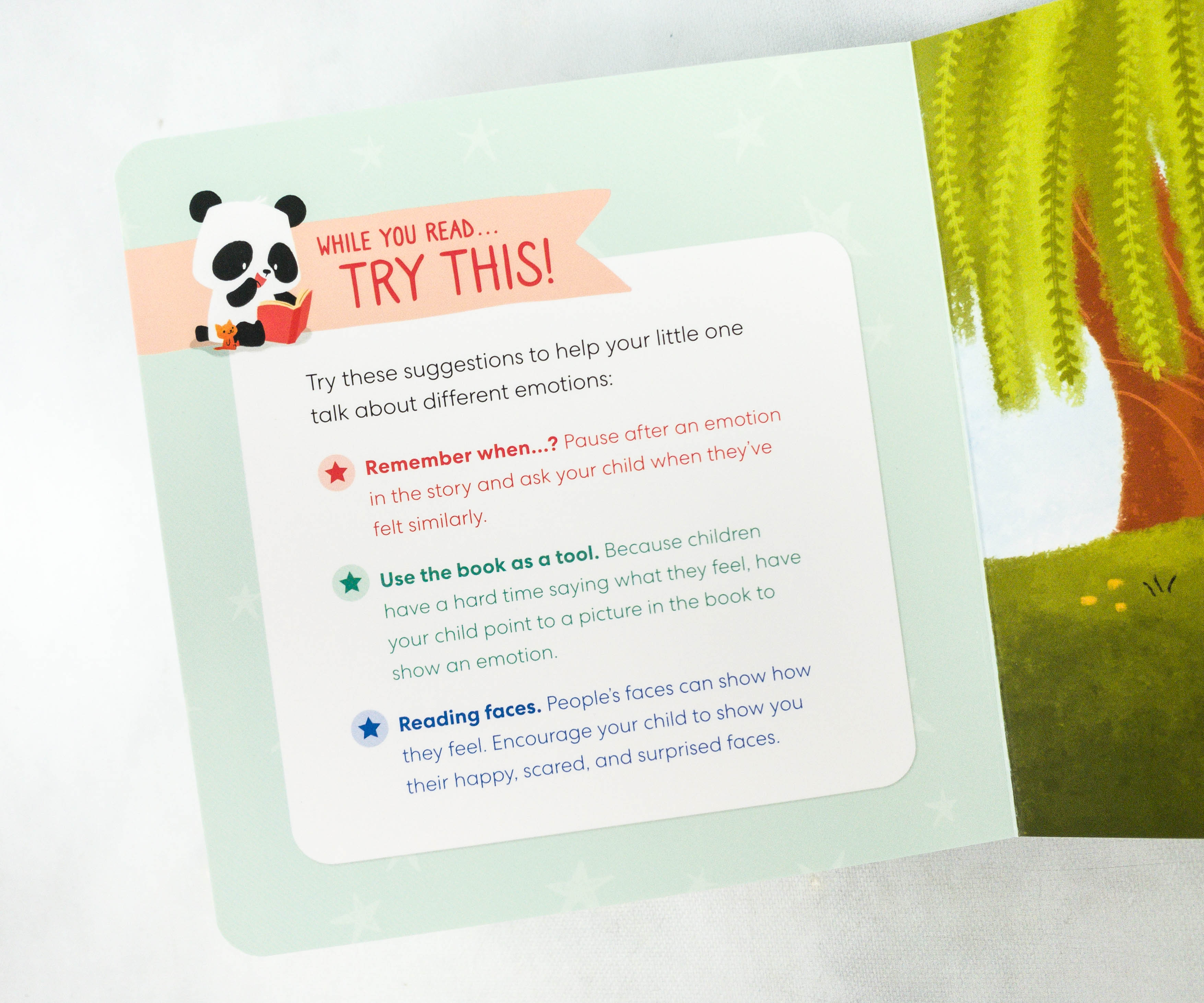
There are suggestions for parents to make this book an effective learning tool!
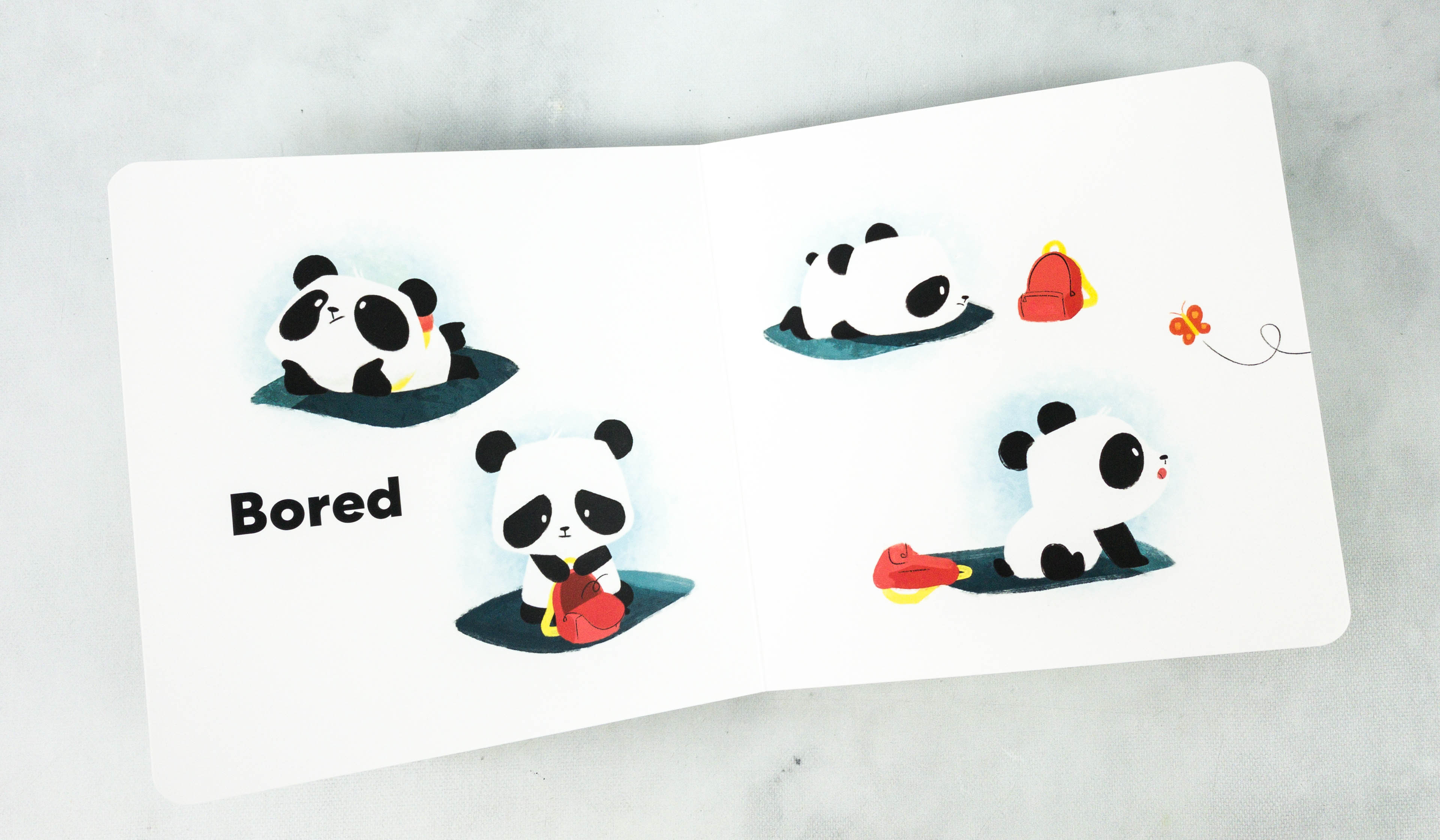
Here’s a sample page! It features illustrations of Poppy the panda being really bored!
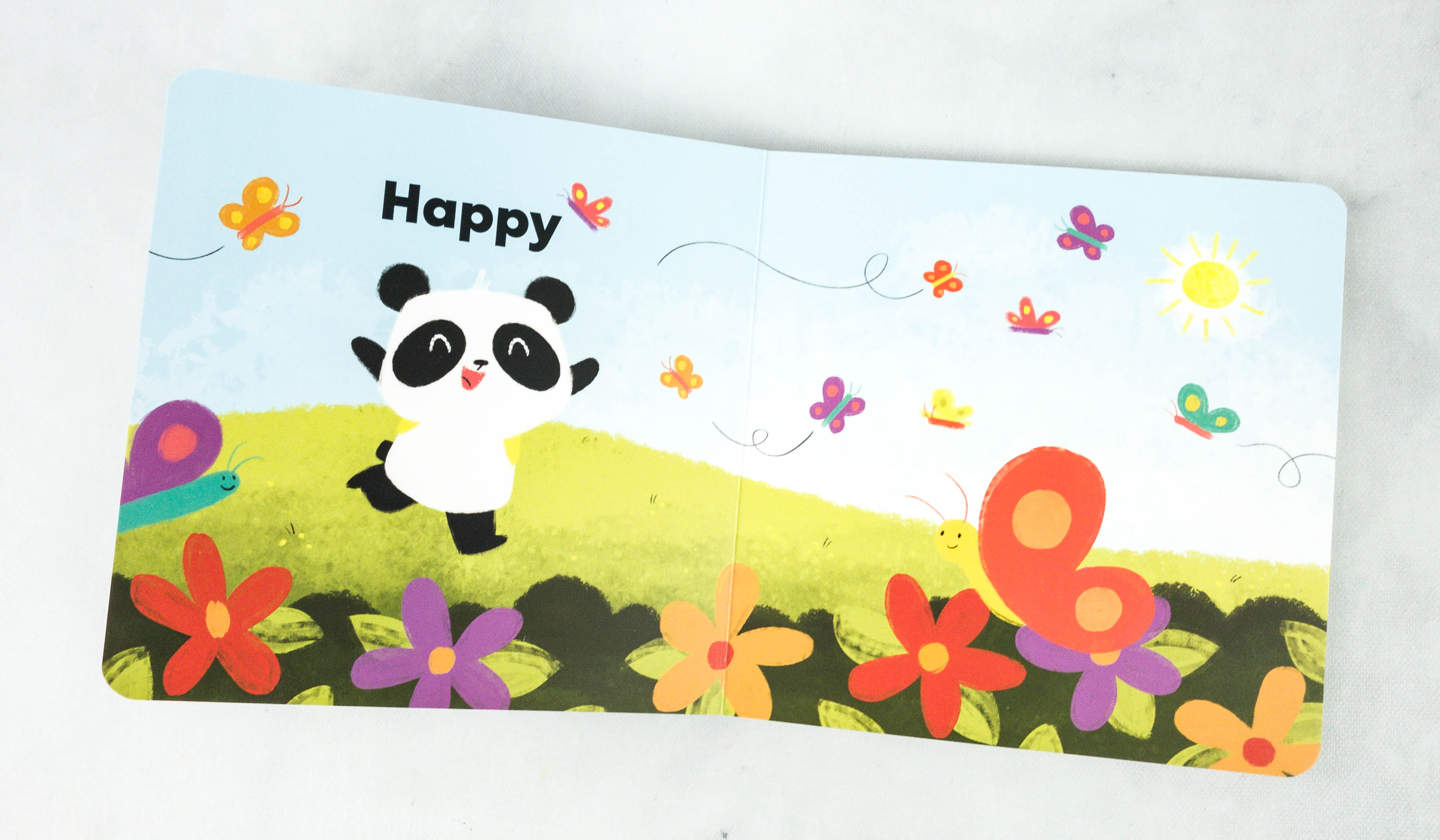
Another page features a happy Poppy running on a field and surrounded by flowers and butterflies!
This month’s Panda Crate box focused on helping kids to learn about the different kinds of emotions. As expected, the items we received were of the highest quality. They’re made with kid-safe materials and are specially designed for developmental play. The box also included toys that can be brought on the go and even an item that can be used for mealtime. I also appreciate the inclusion of the cards, they are such helpful guides for parents and they also give additional tips on how to maximize each item. If you are looking for a way to help develop your child’s skills while they are having fun, getting this subscription would be a great idea!
What do you think of this month’s Panda Crate?
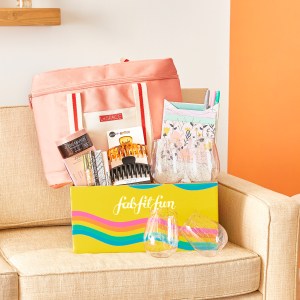
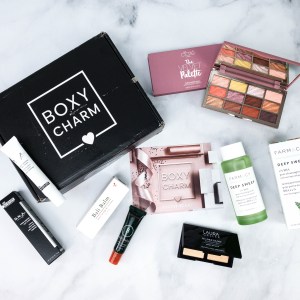
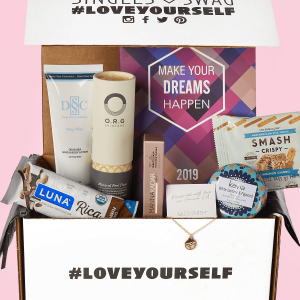
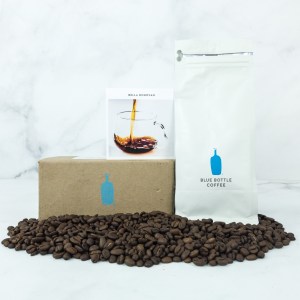
Comments